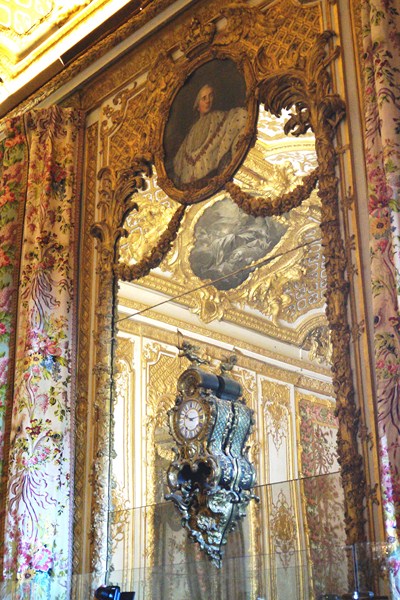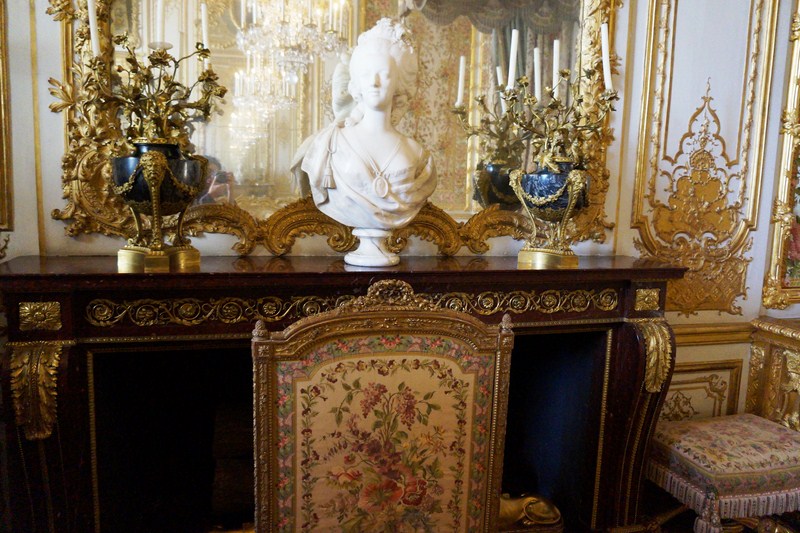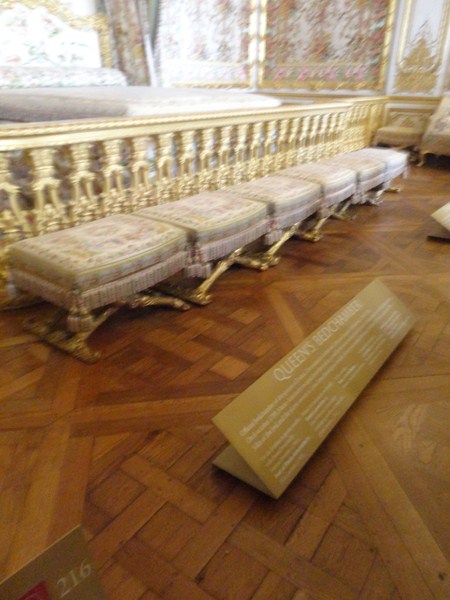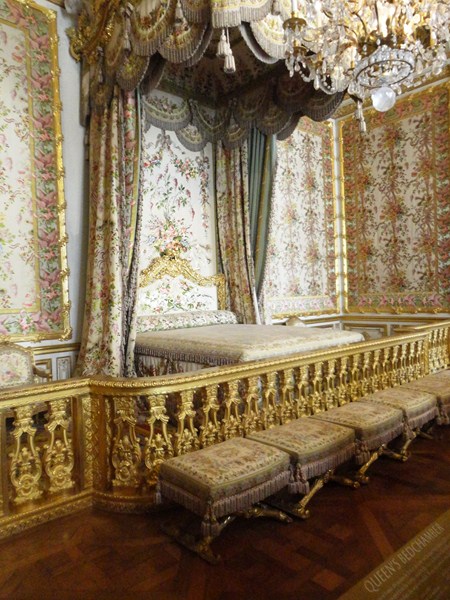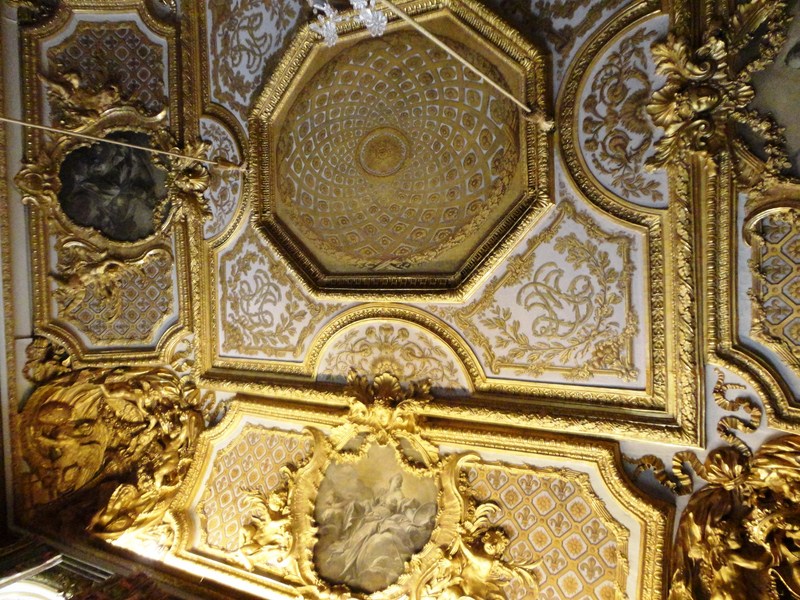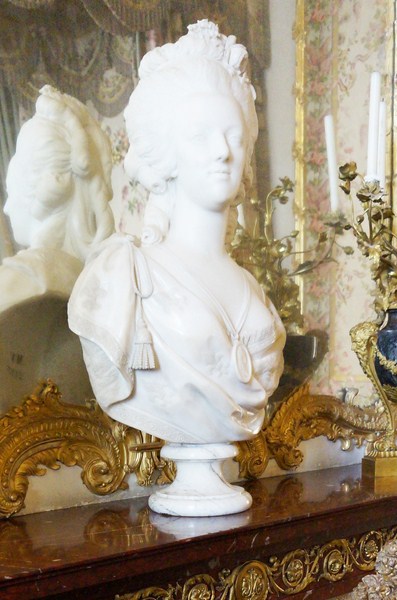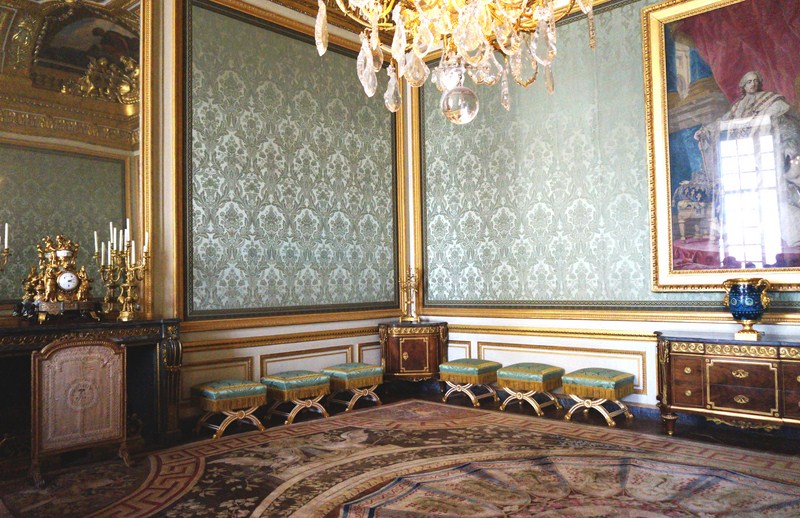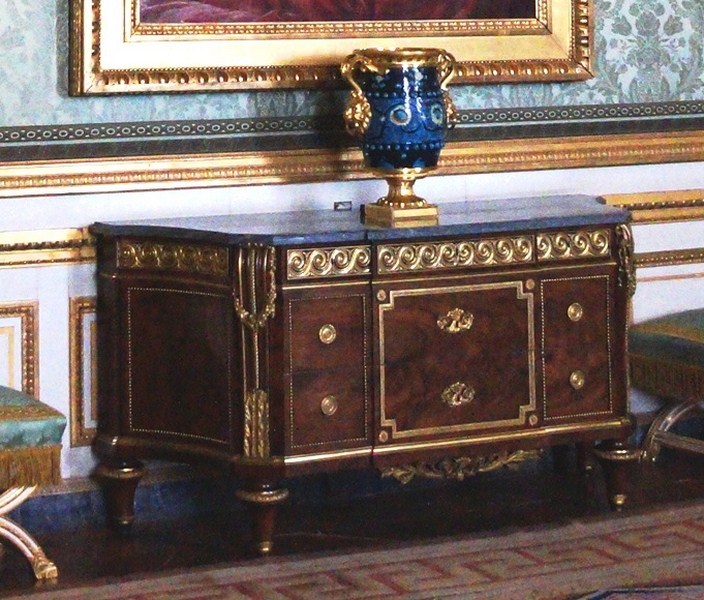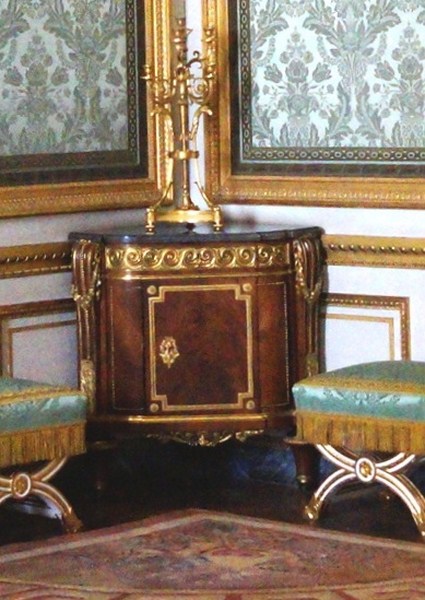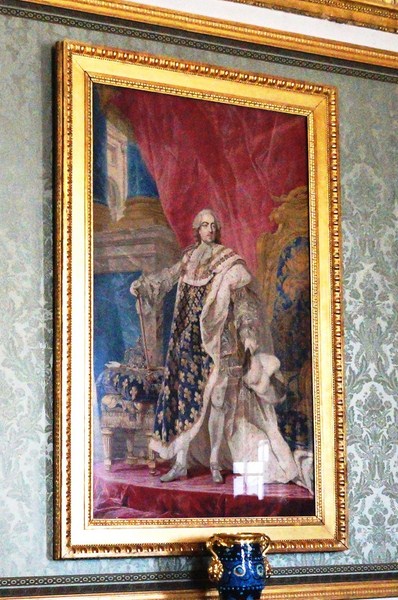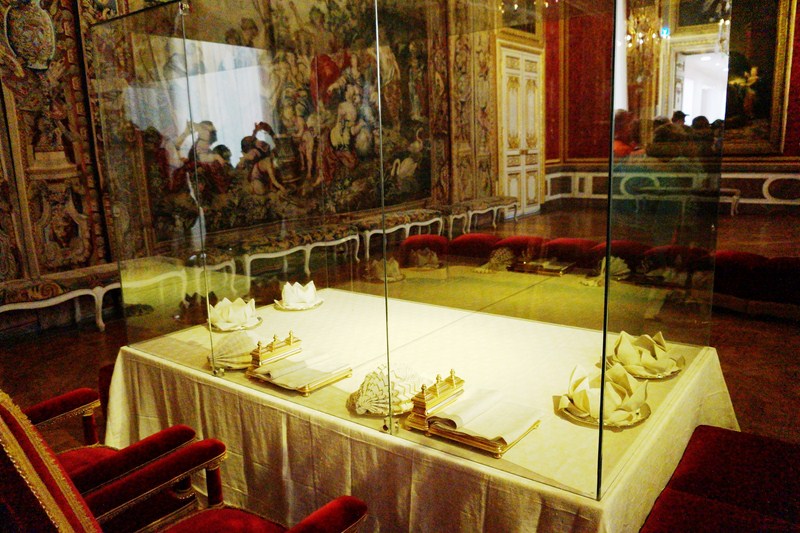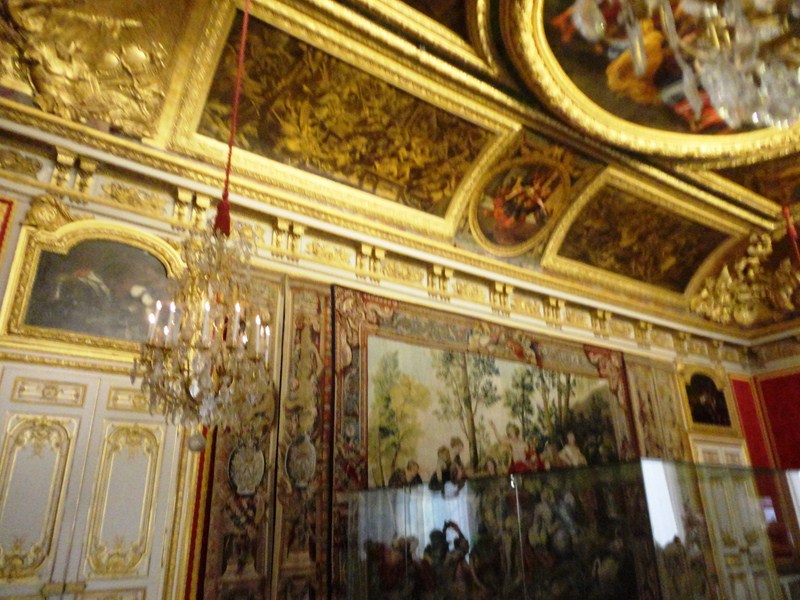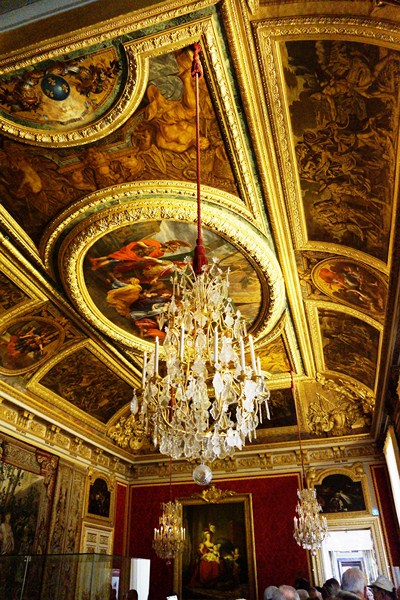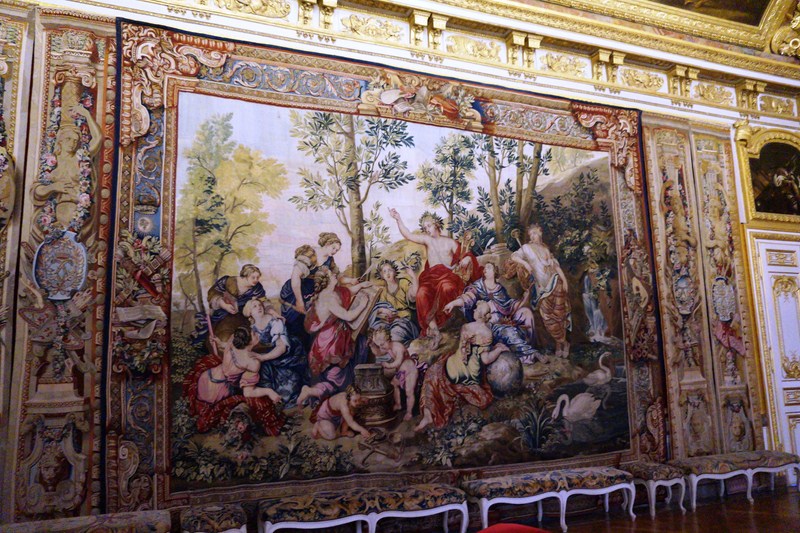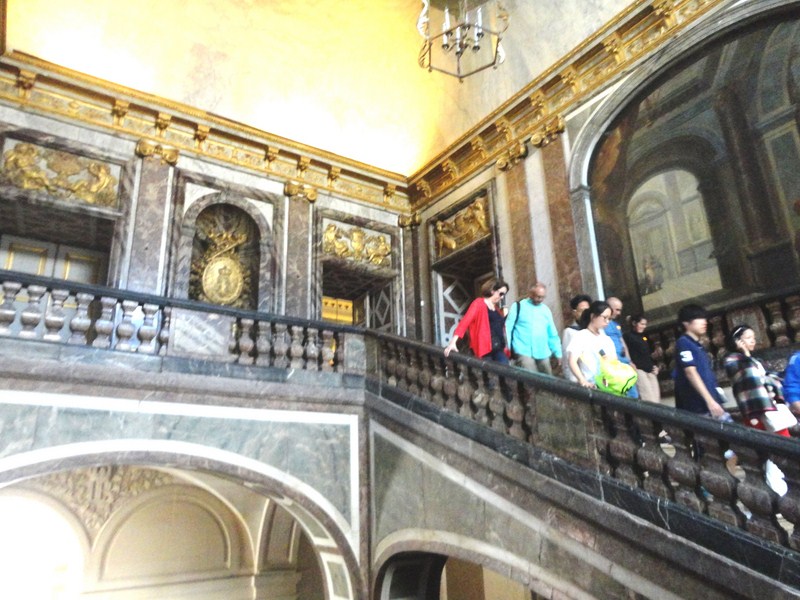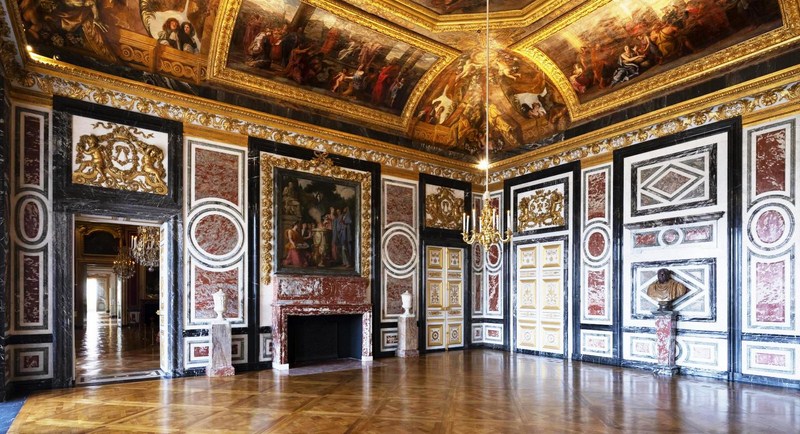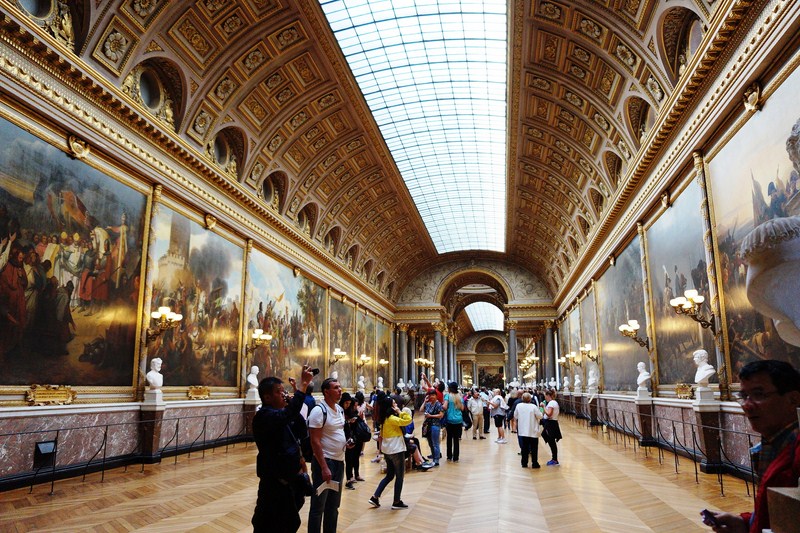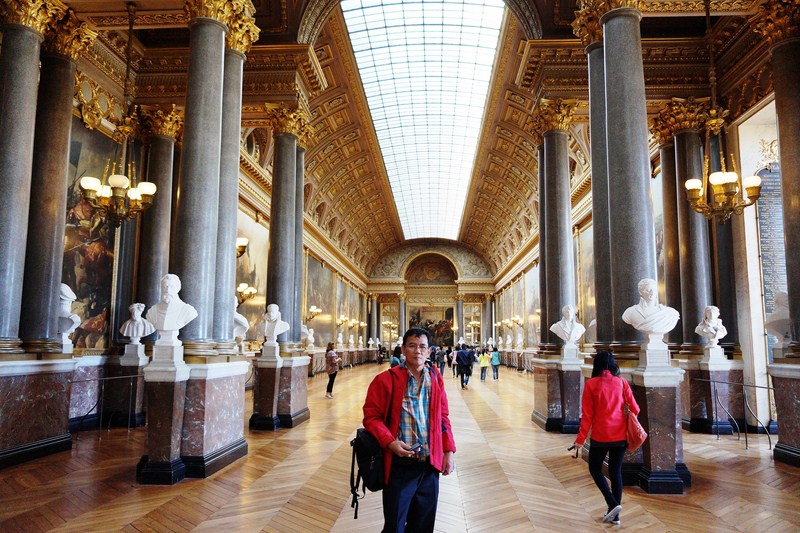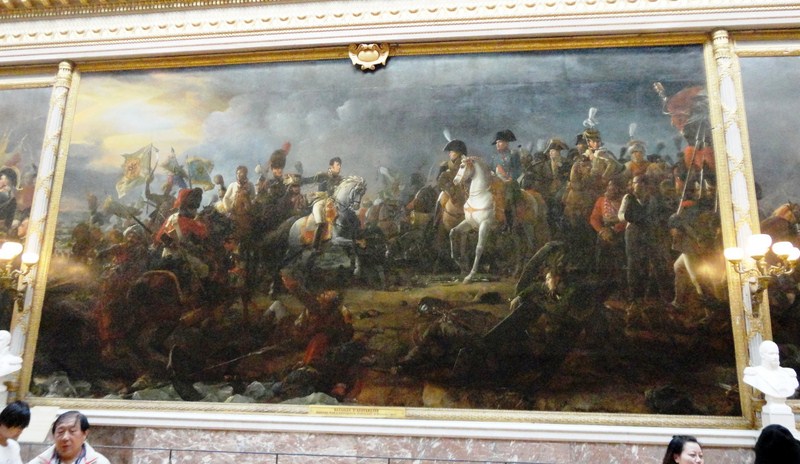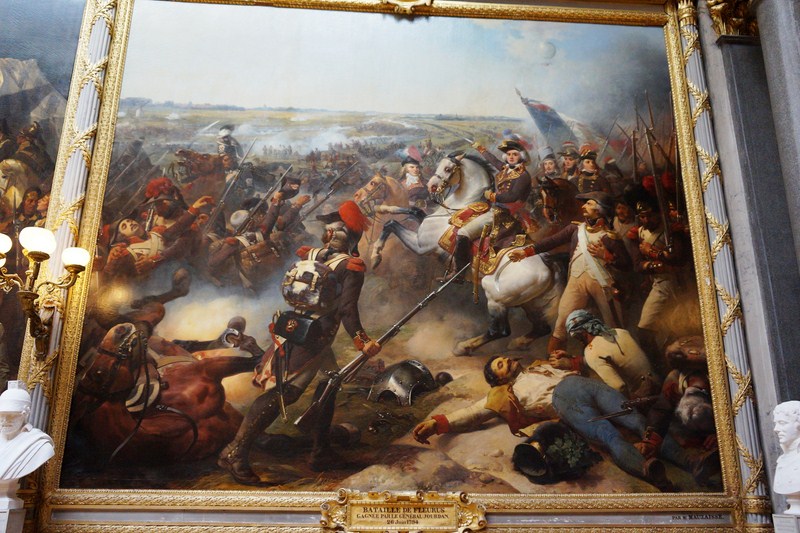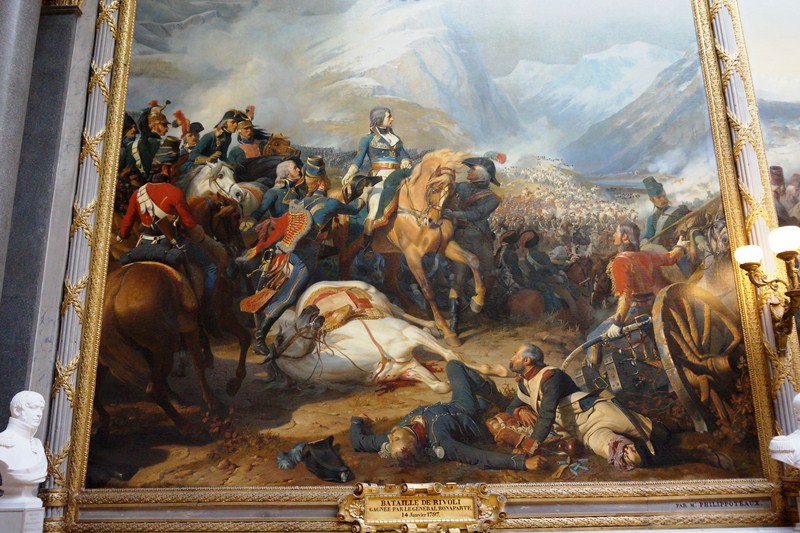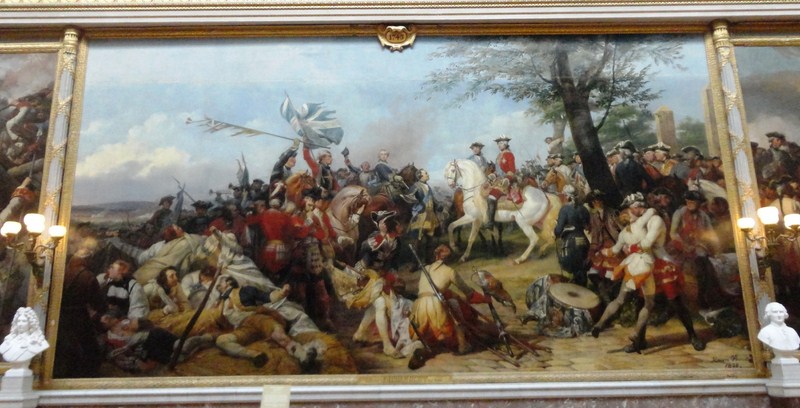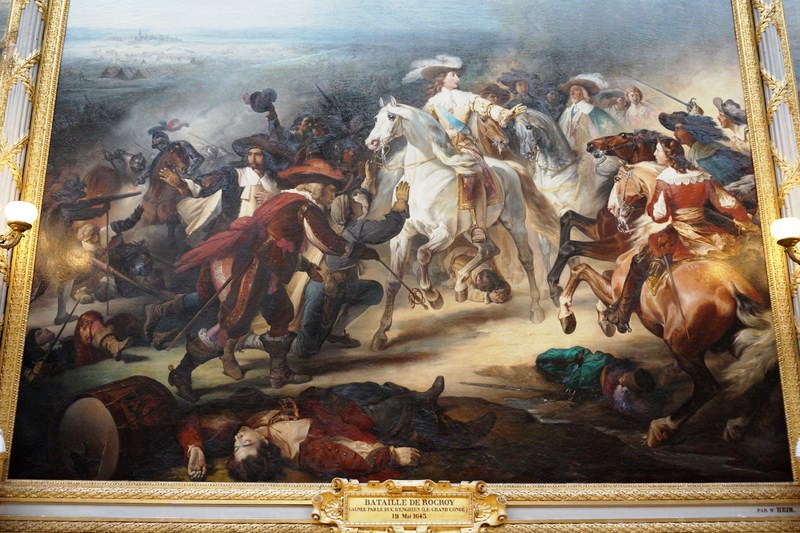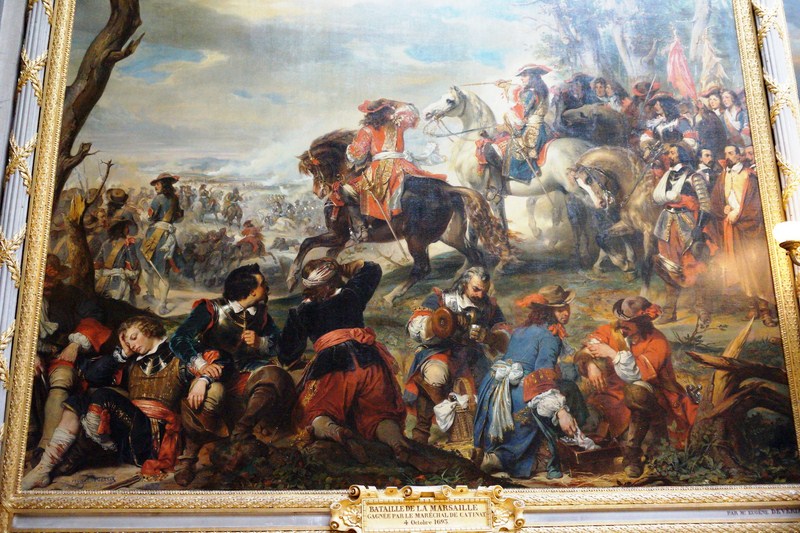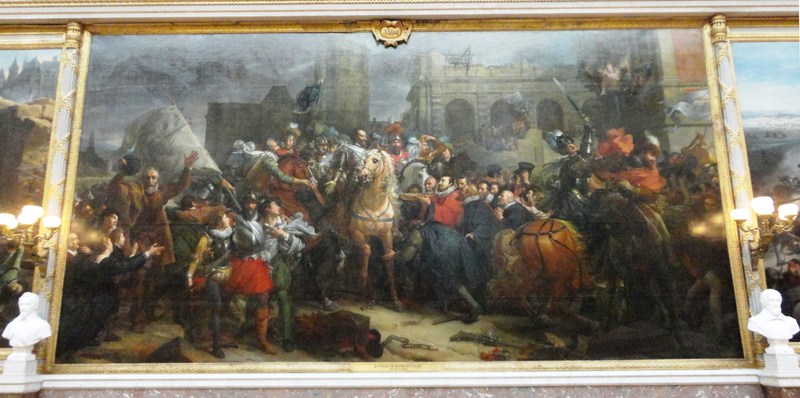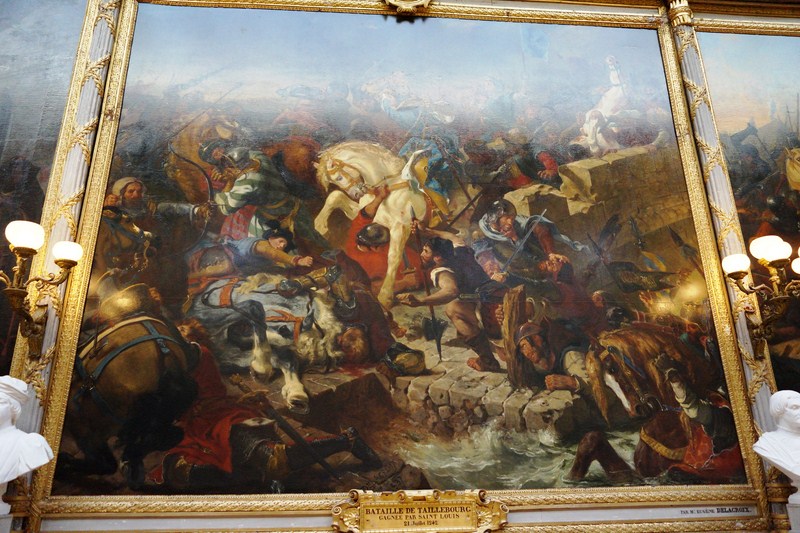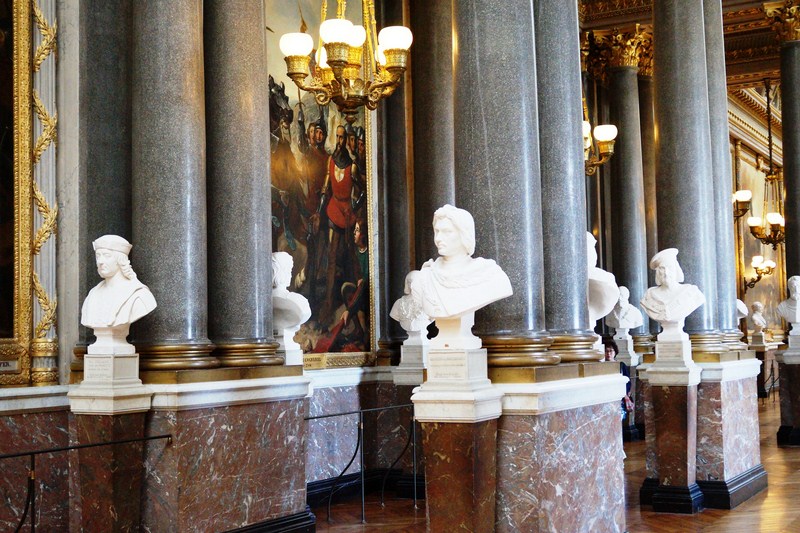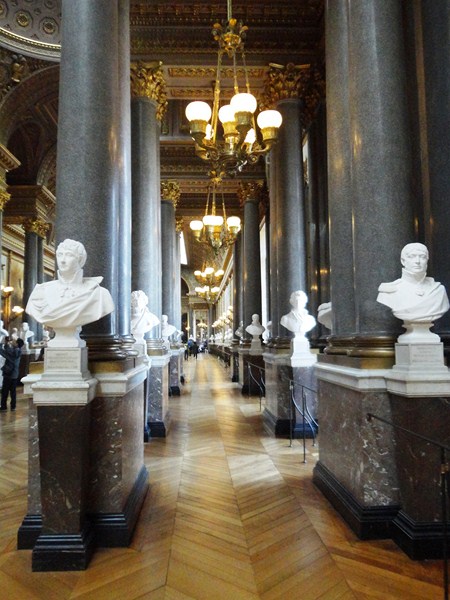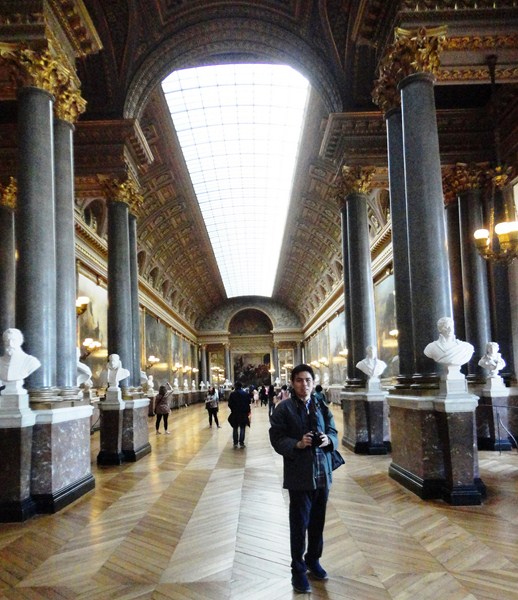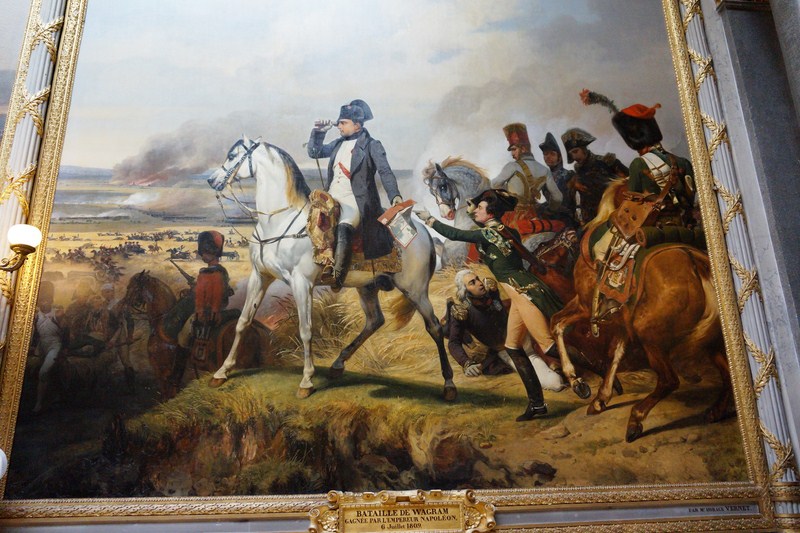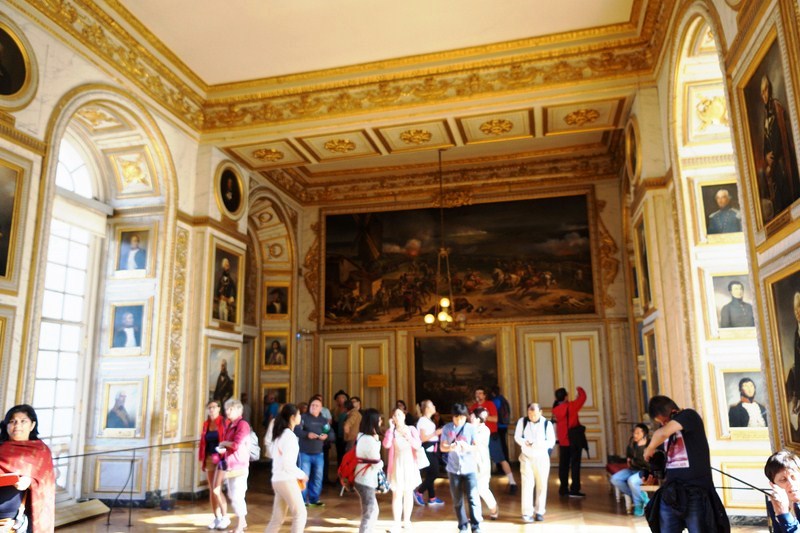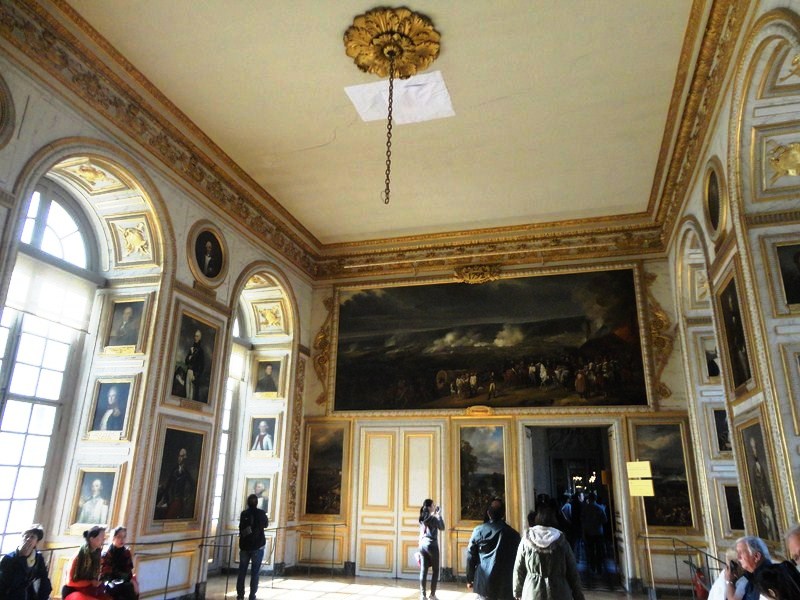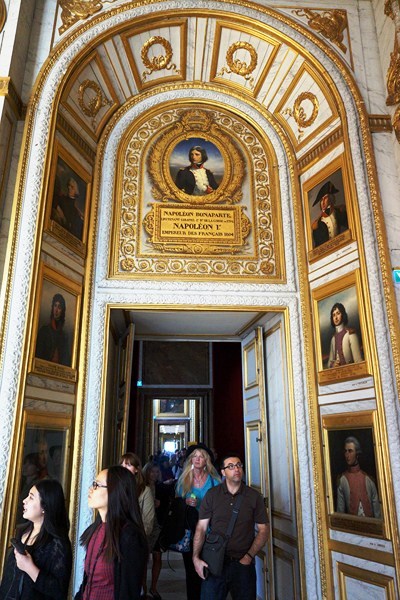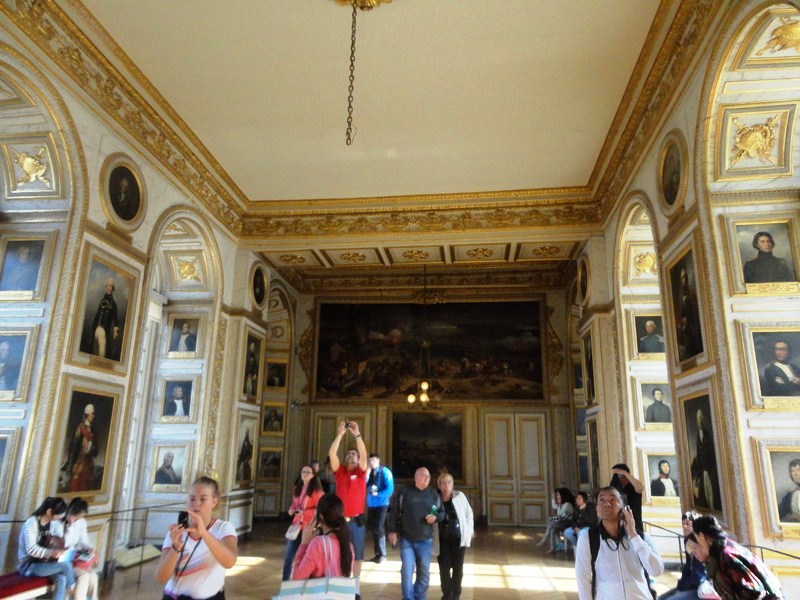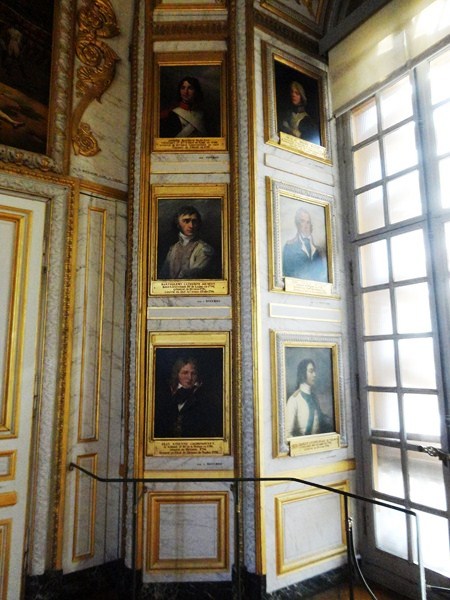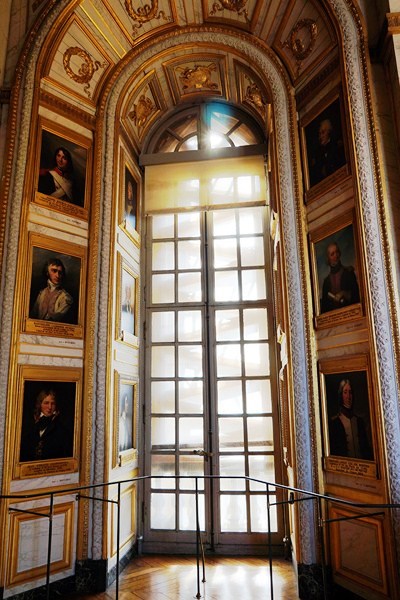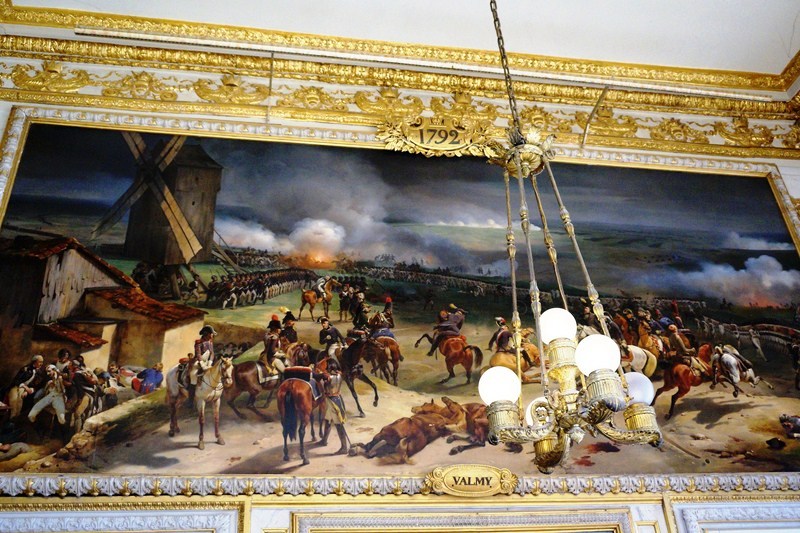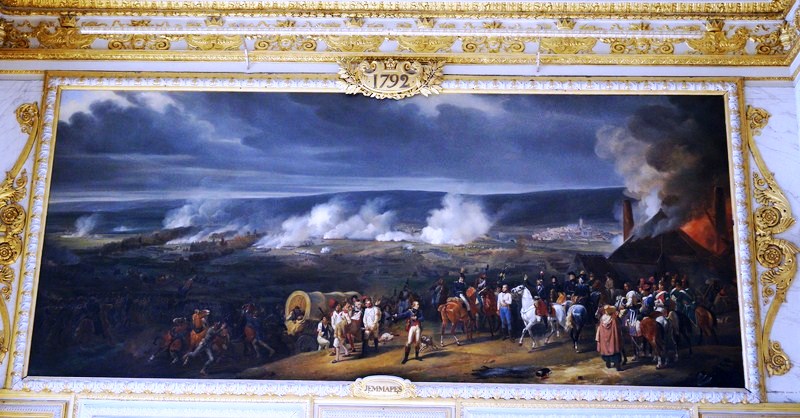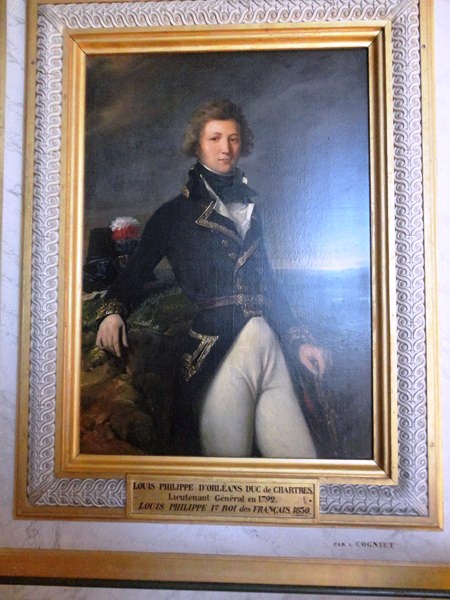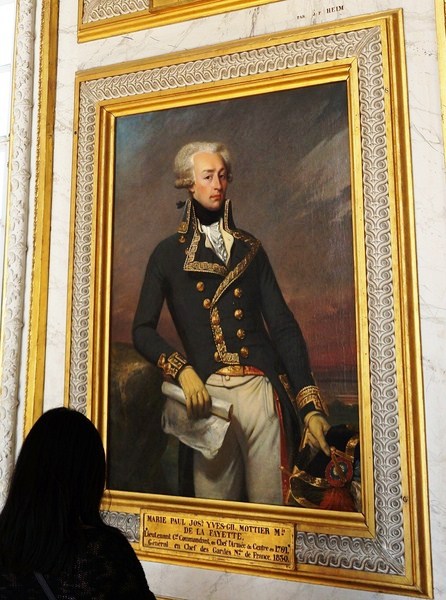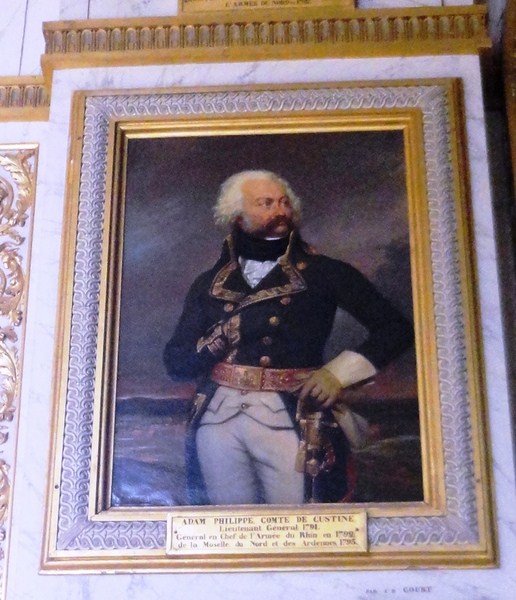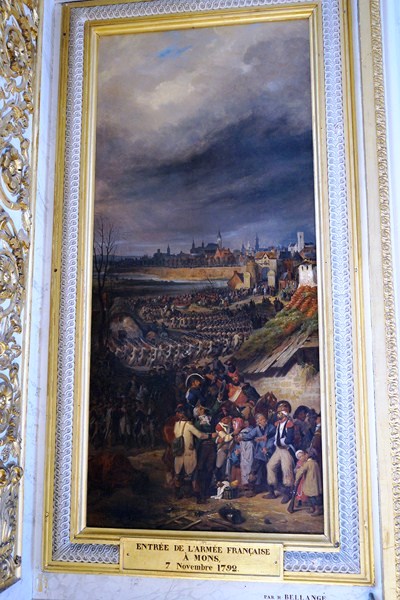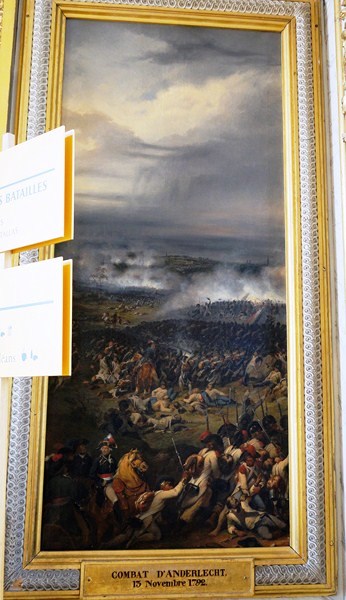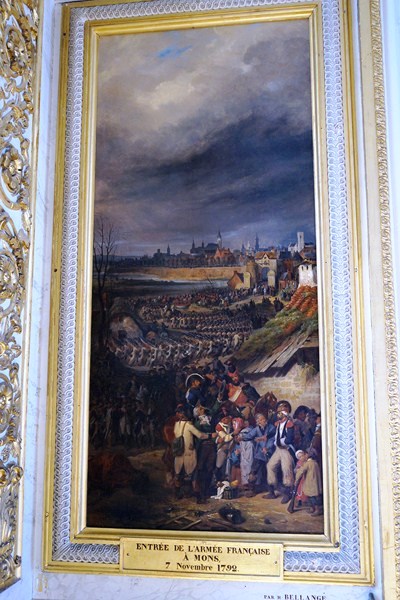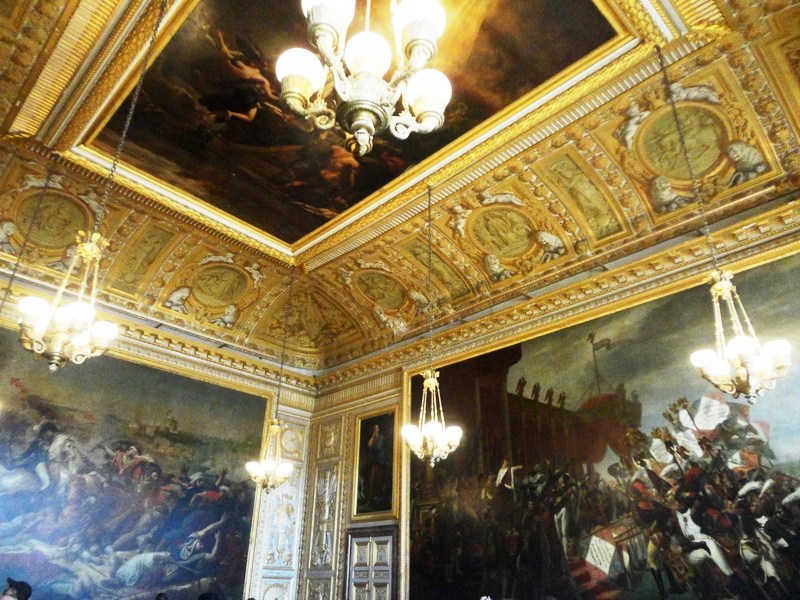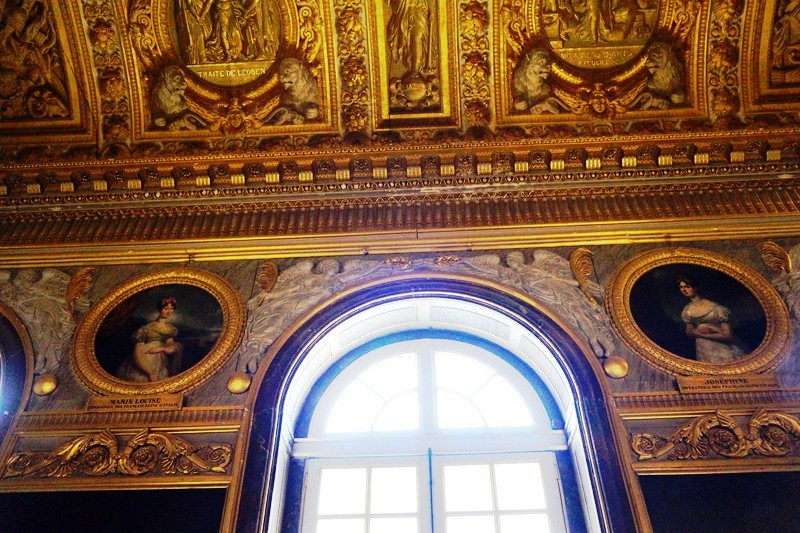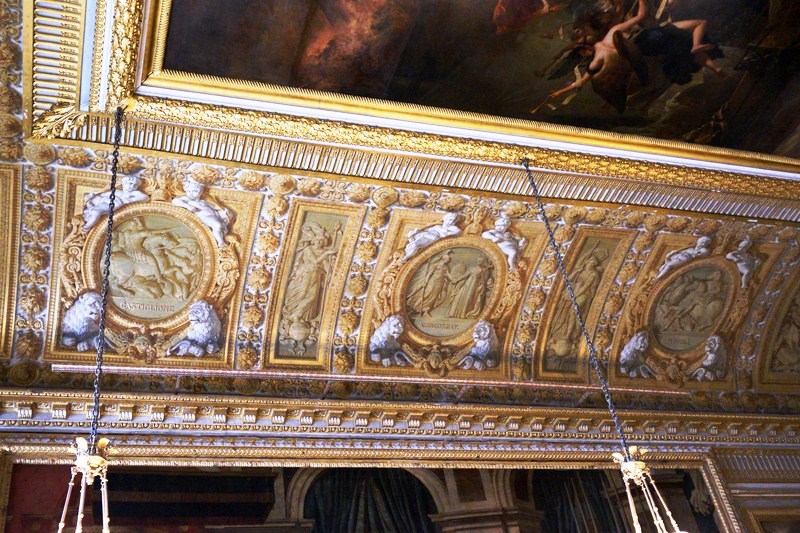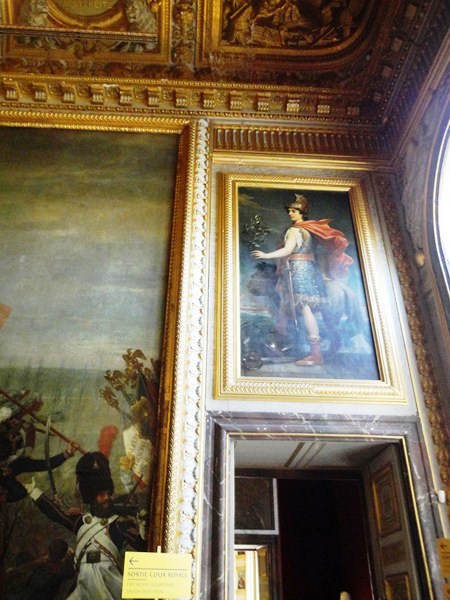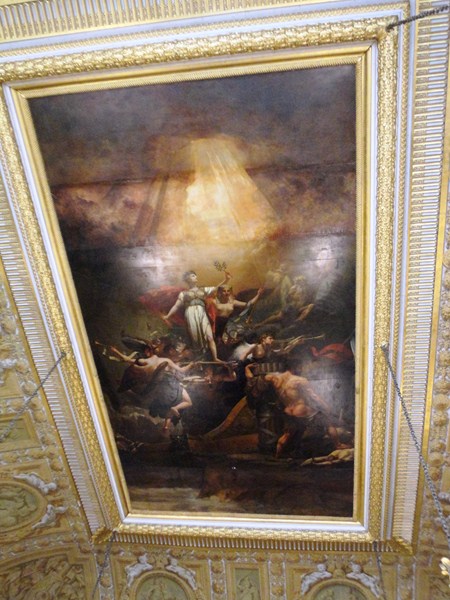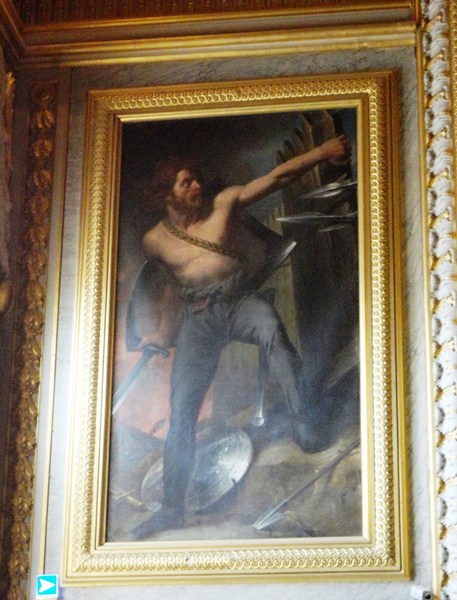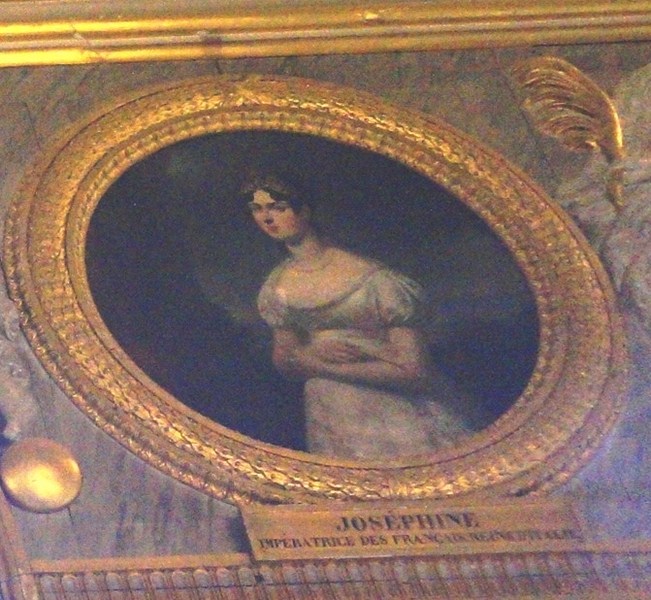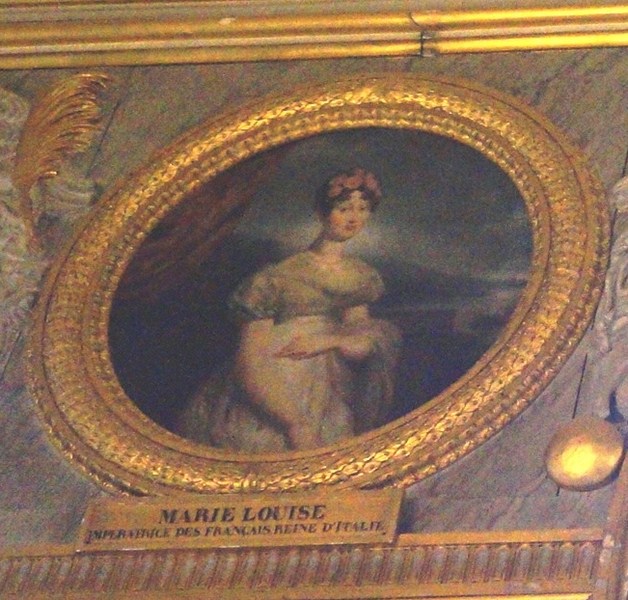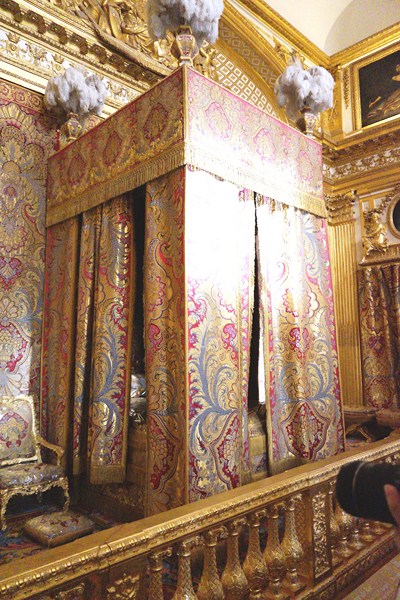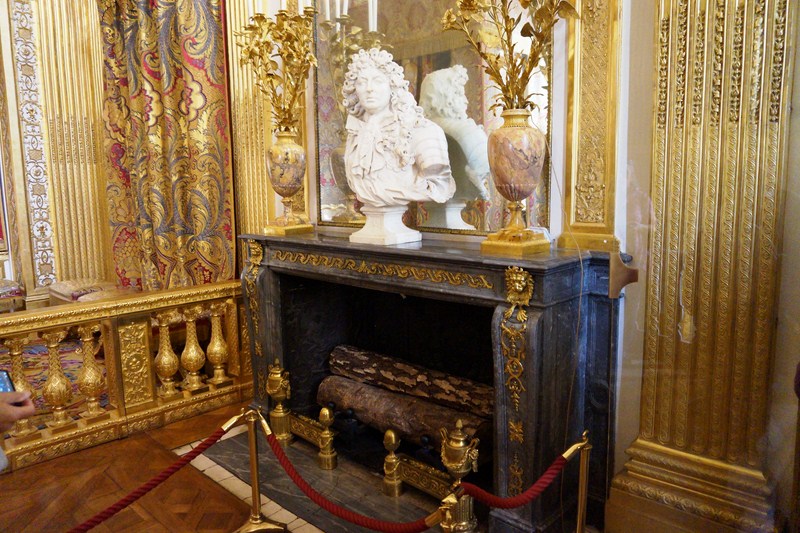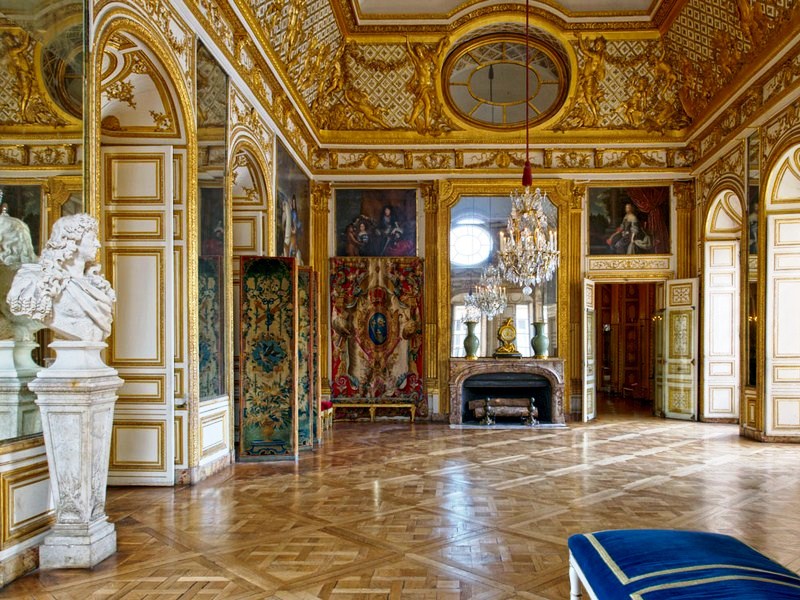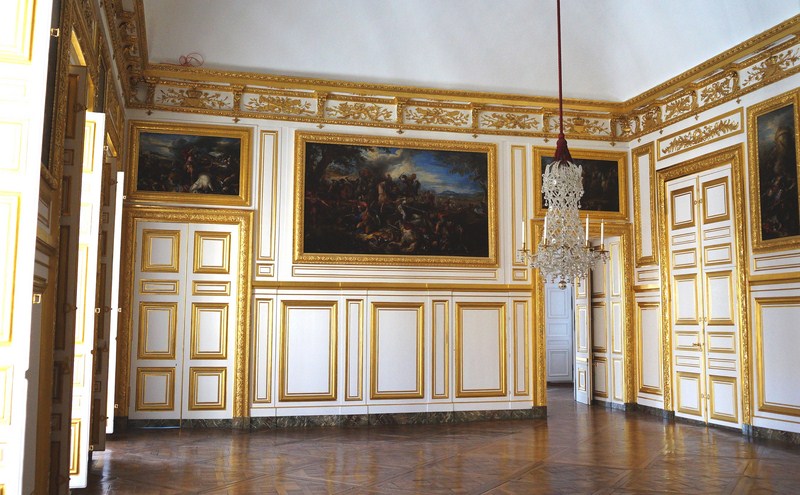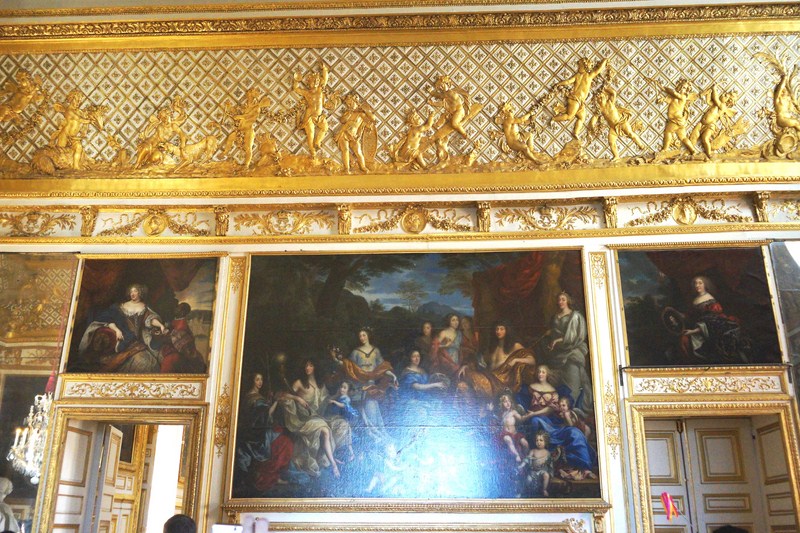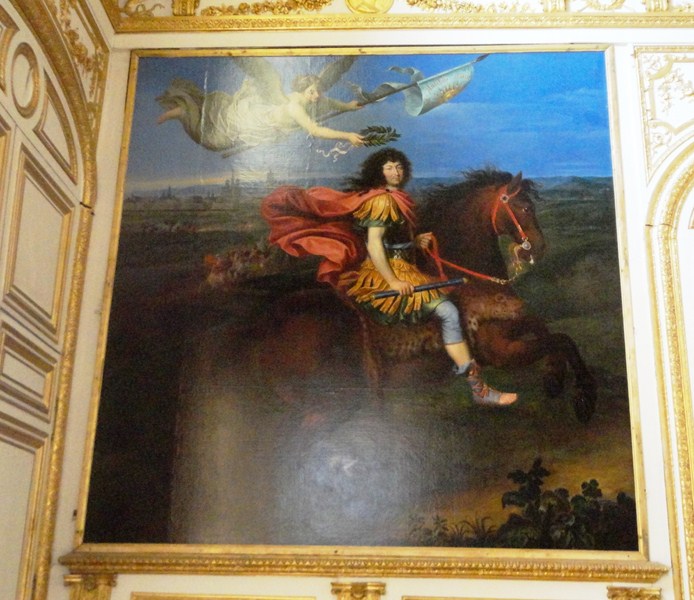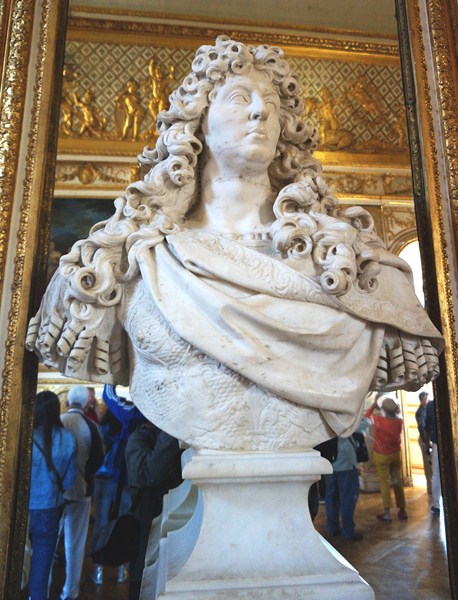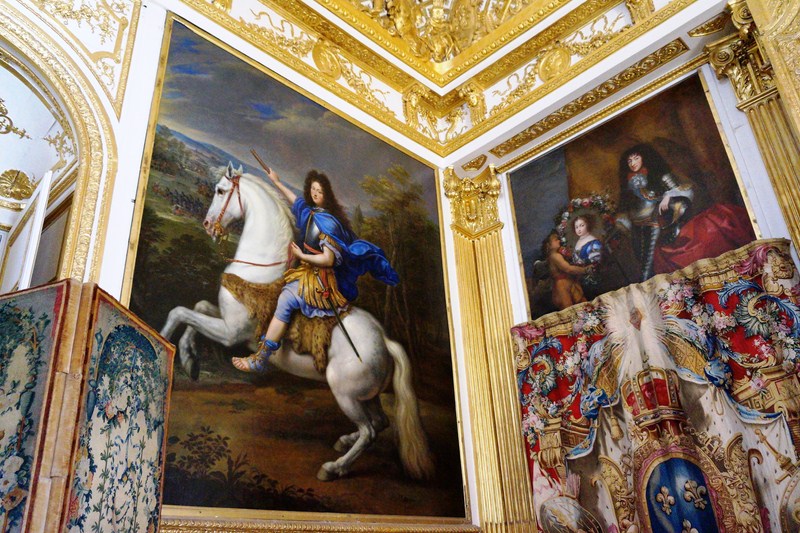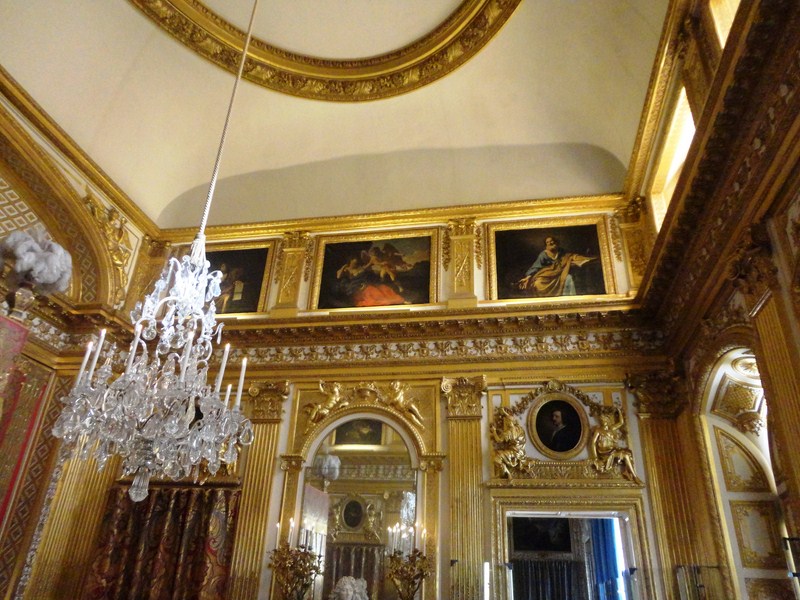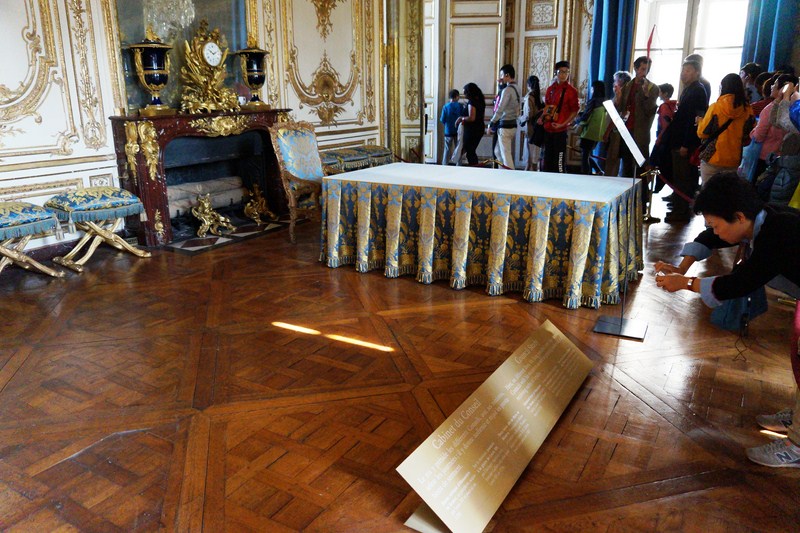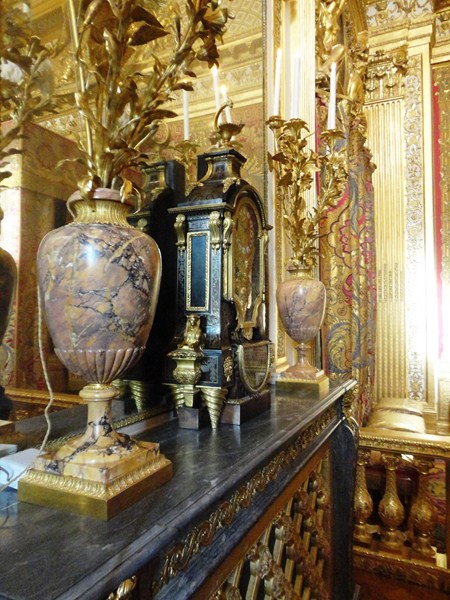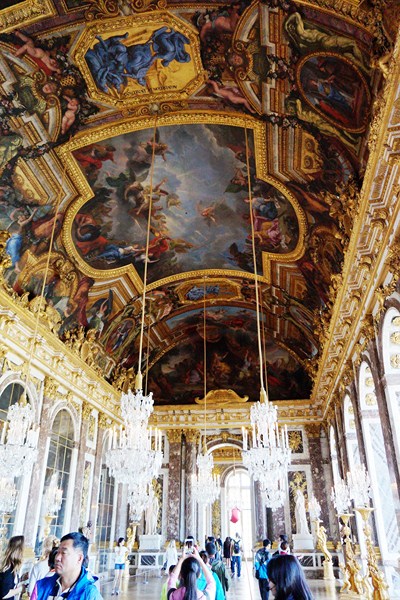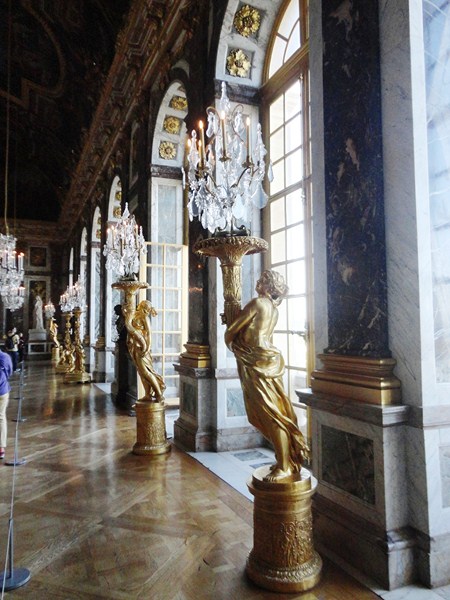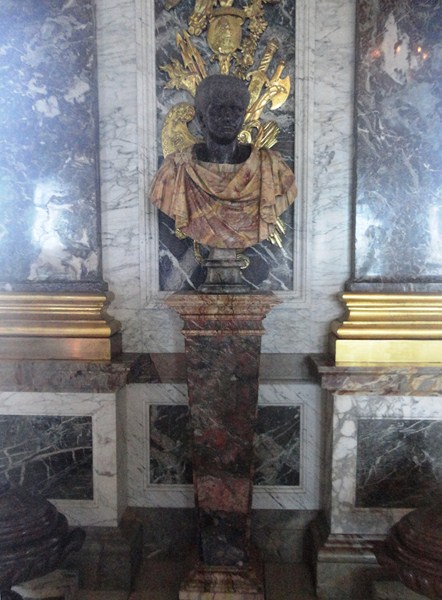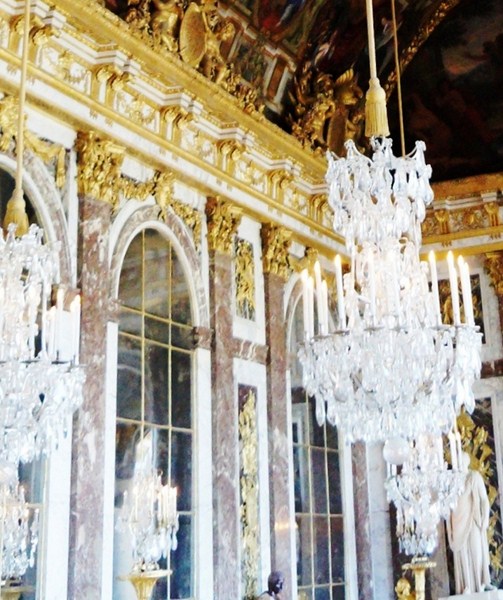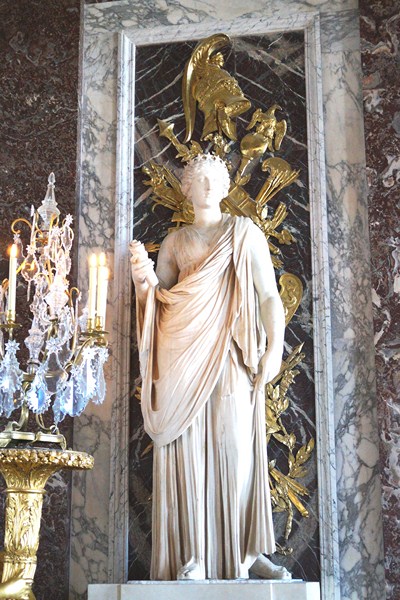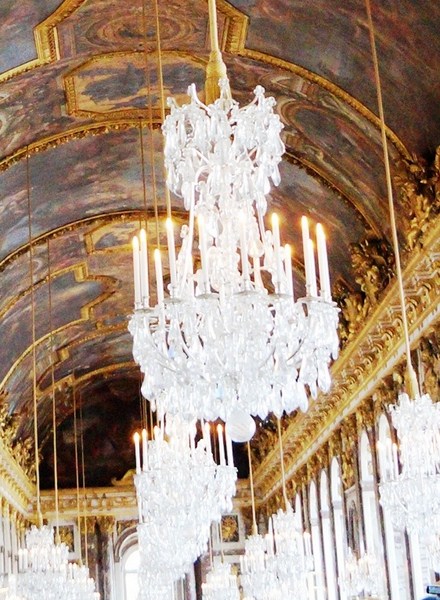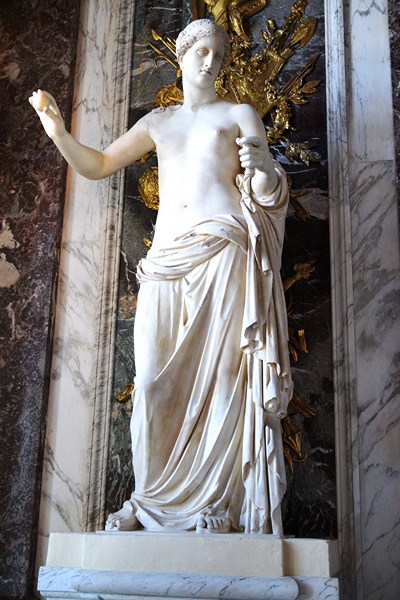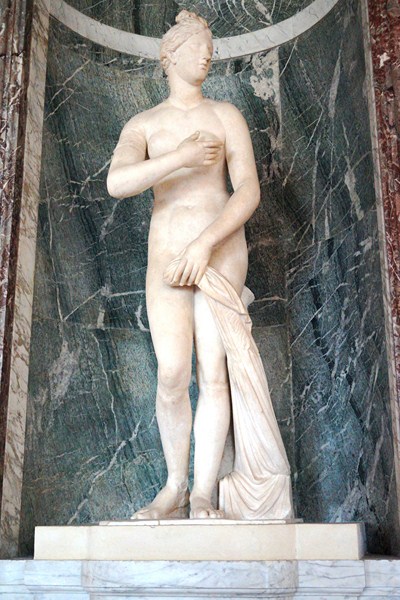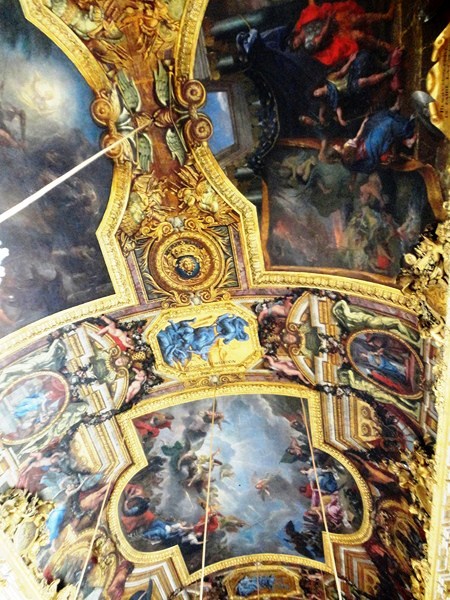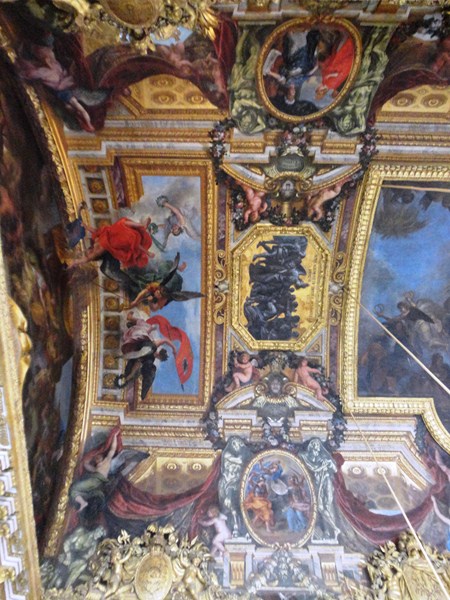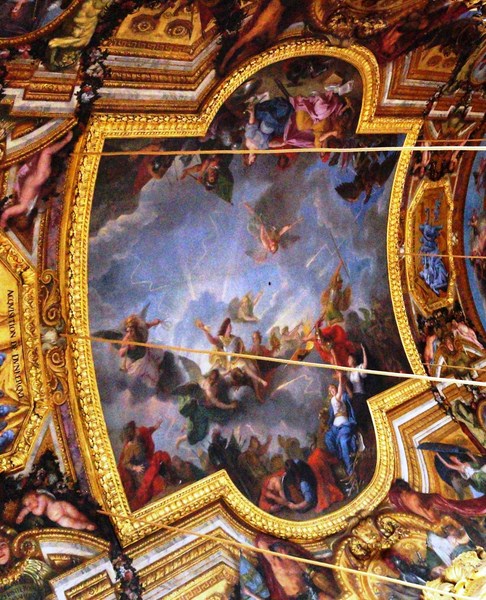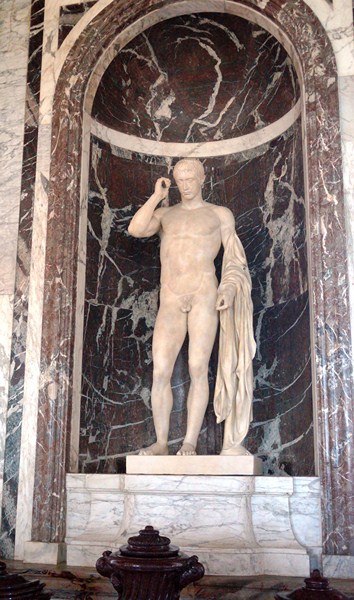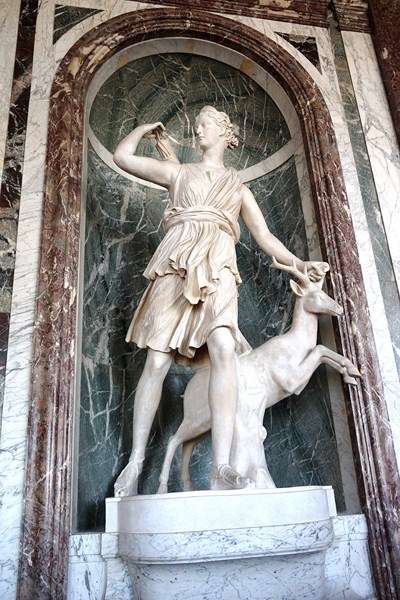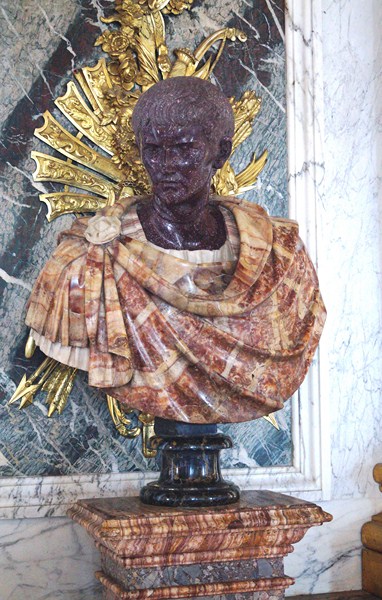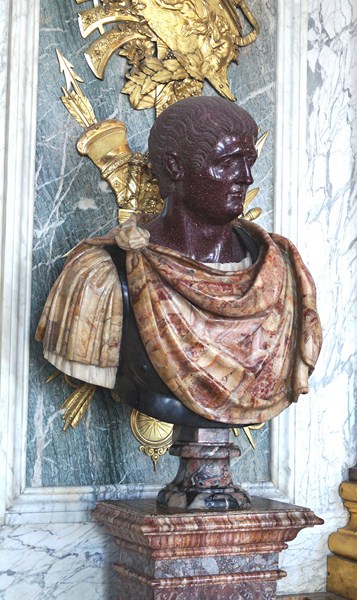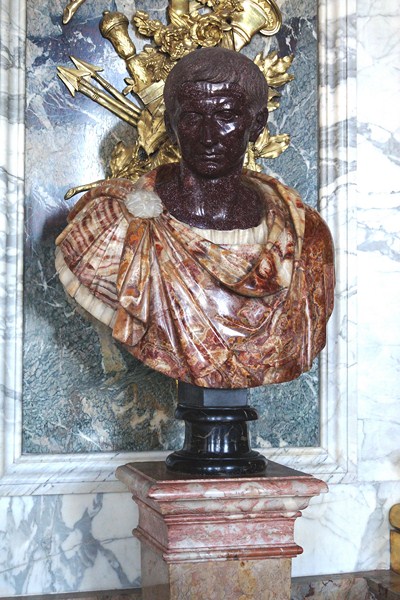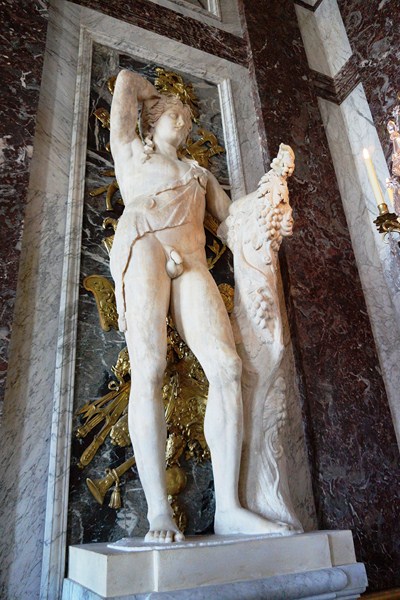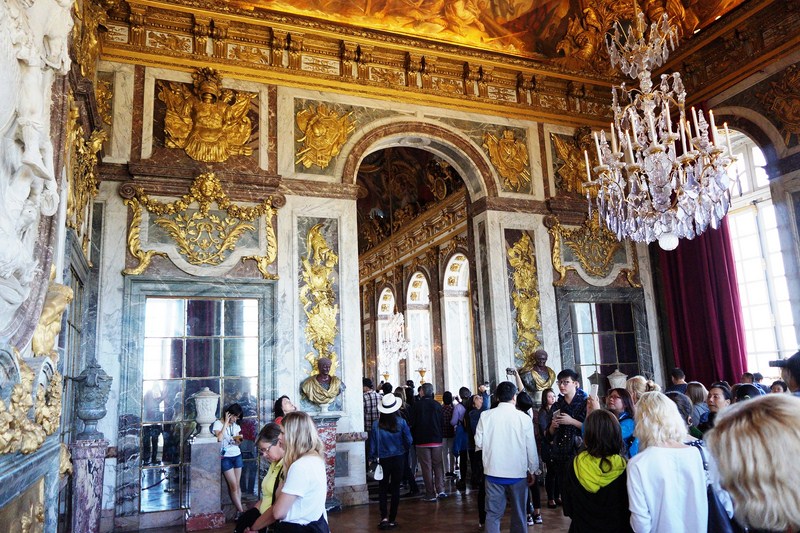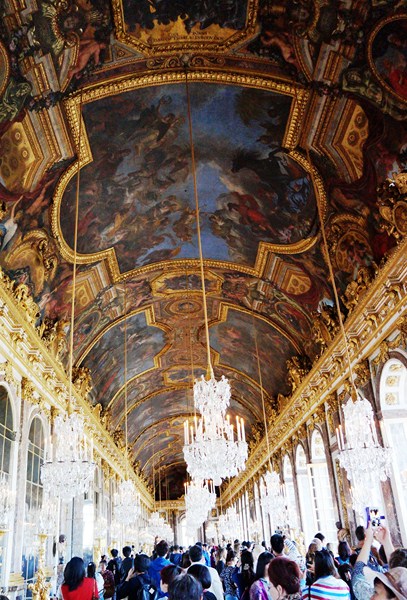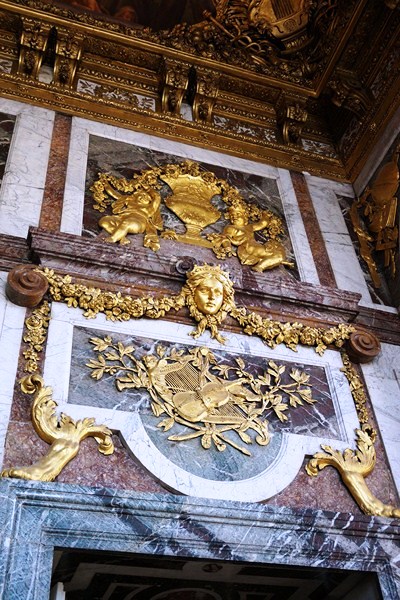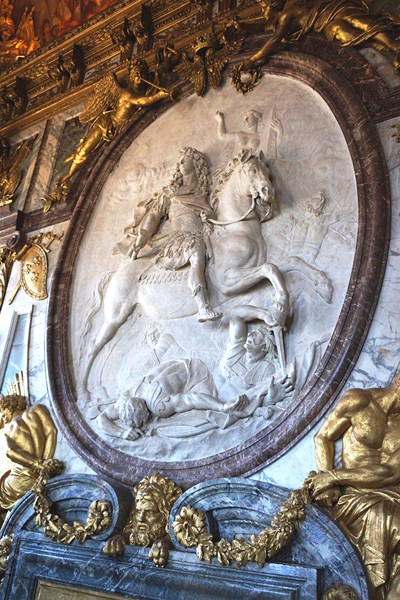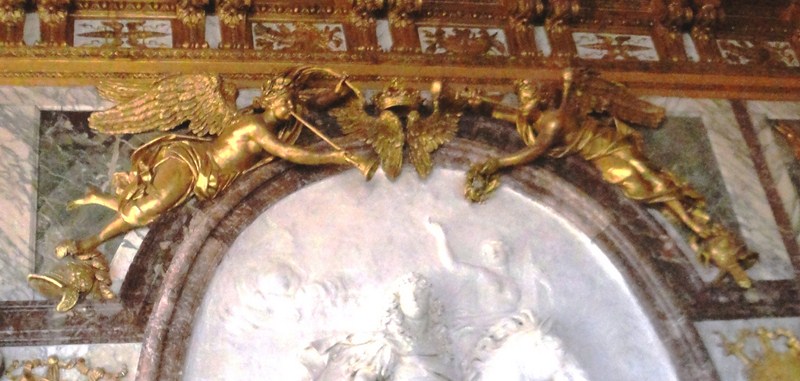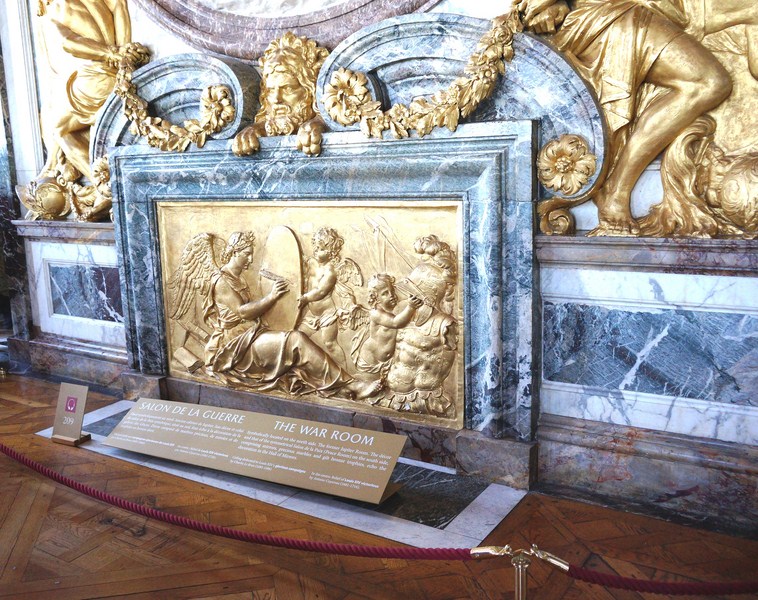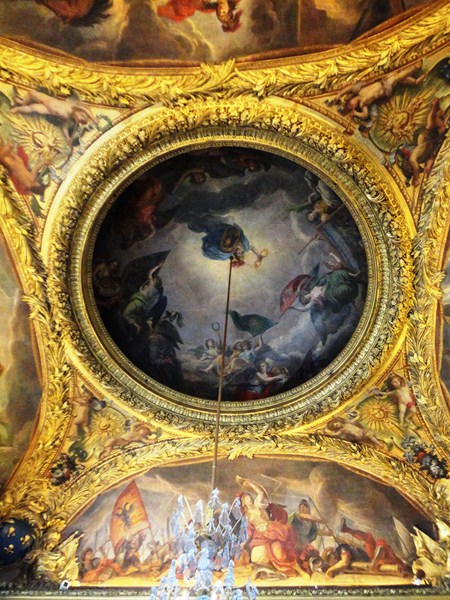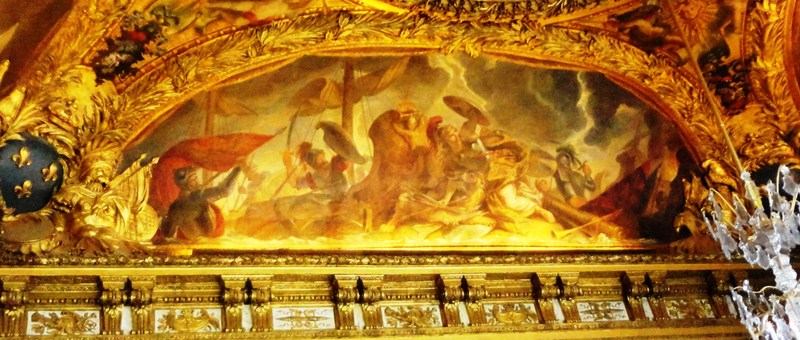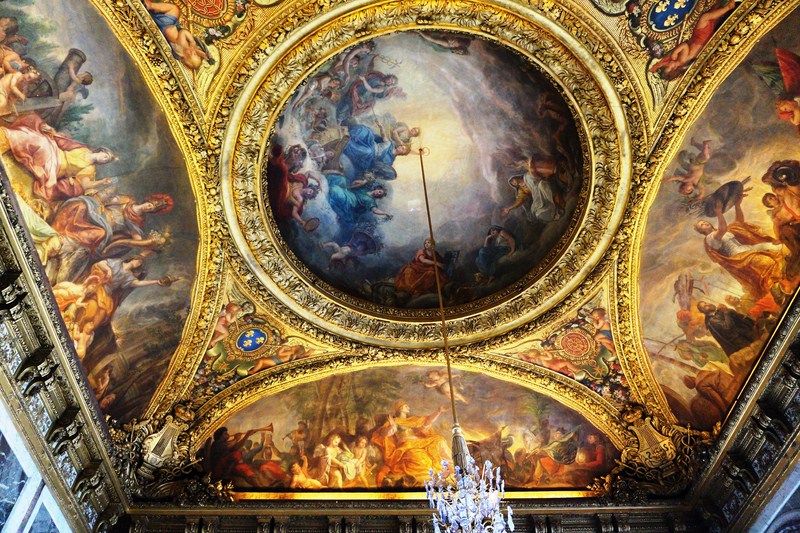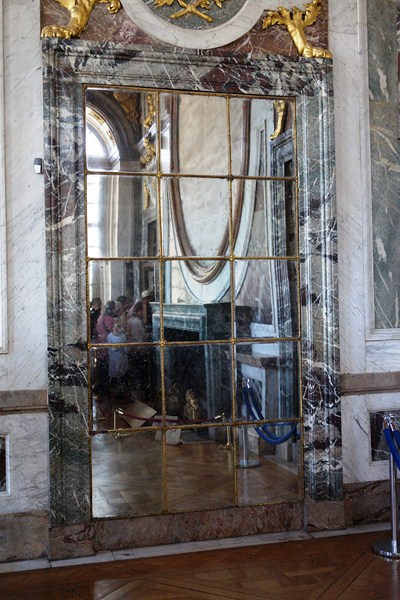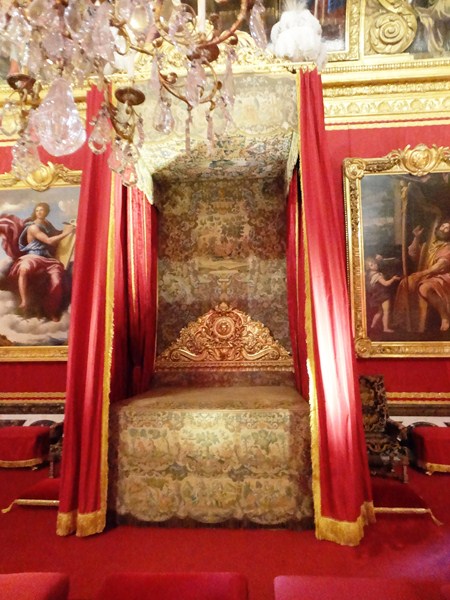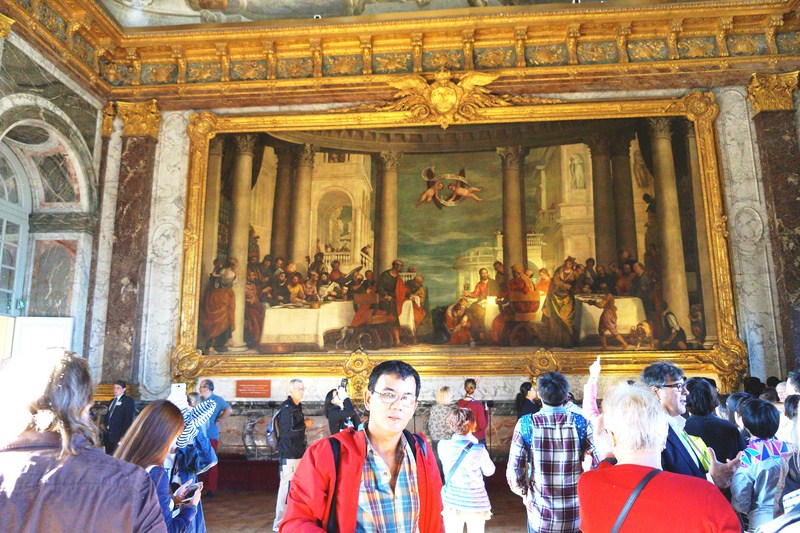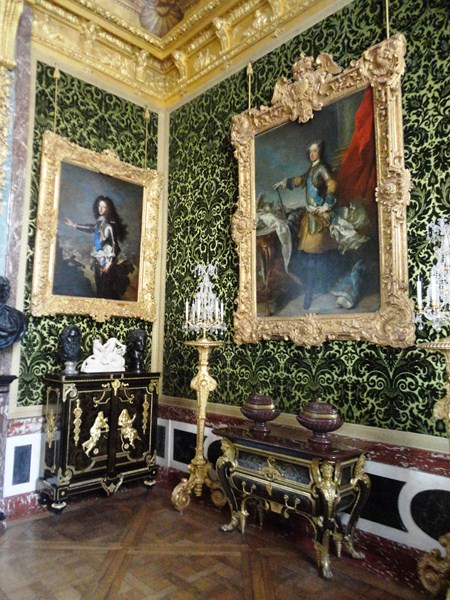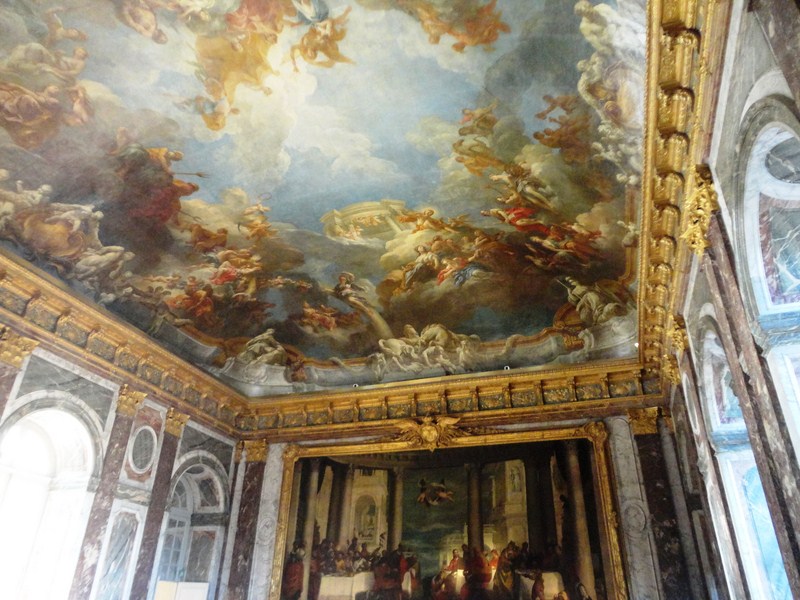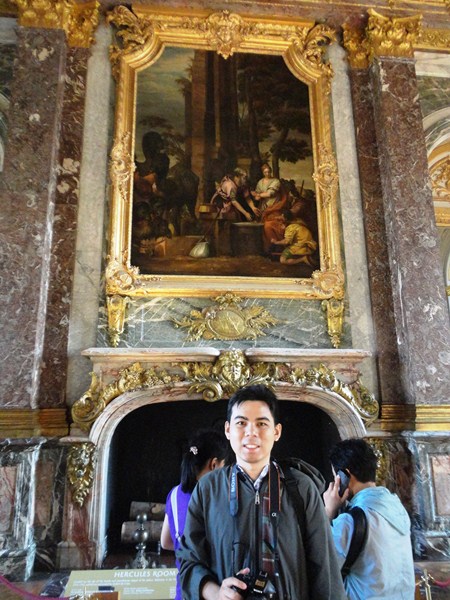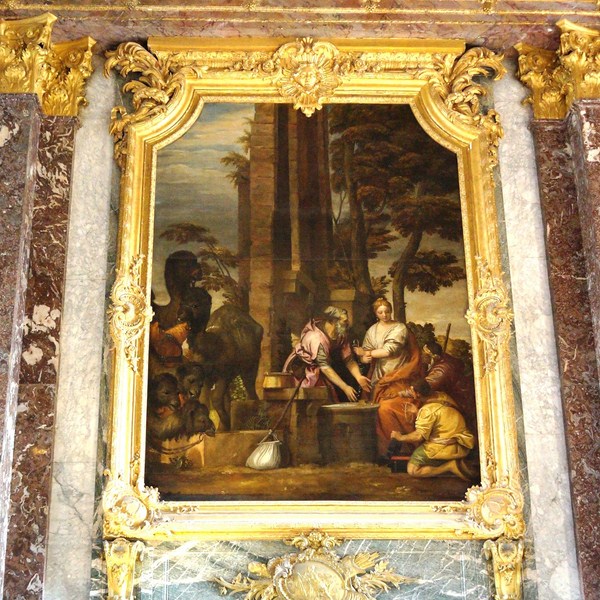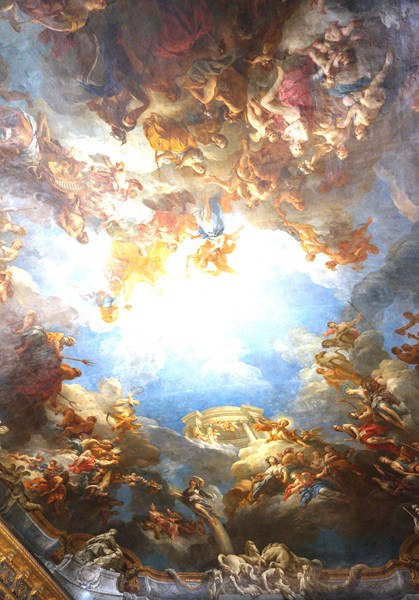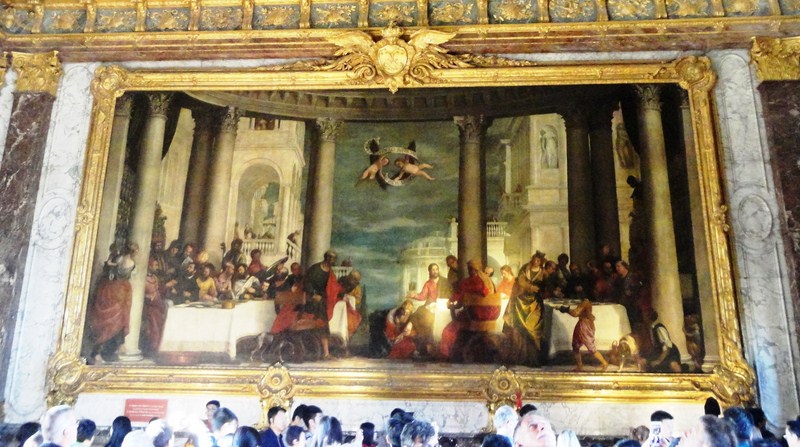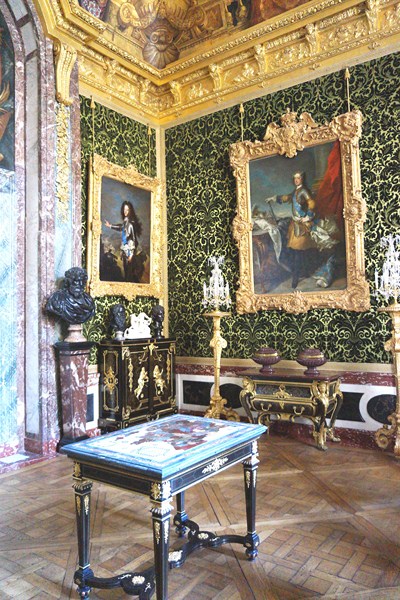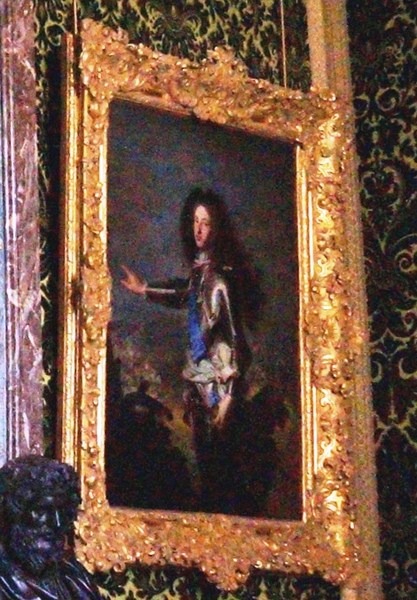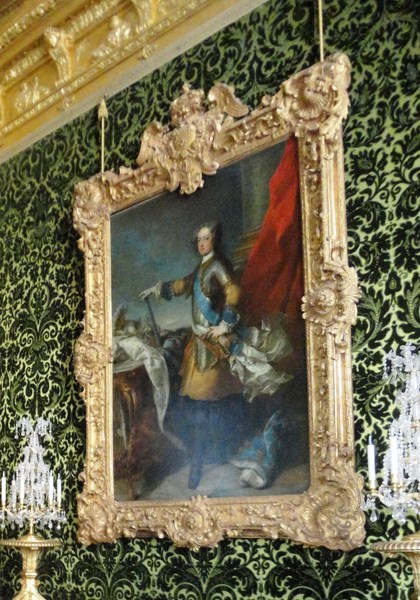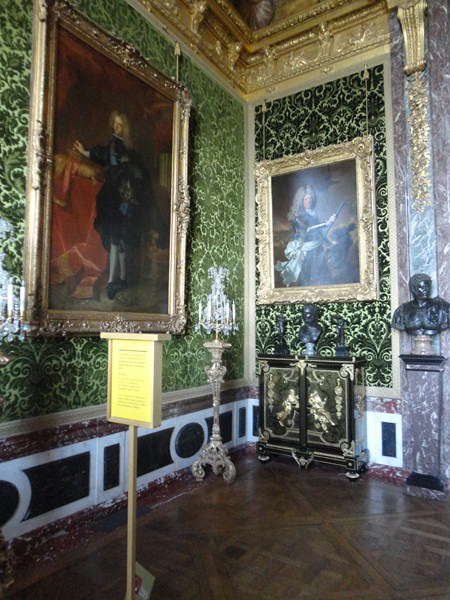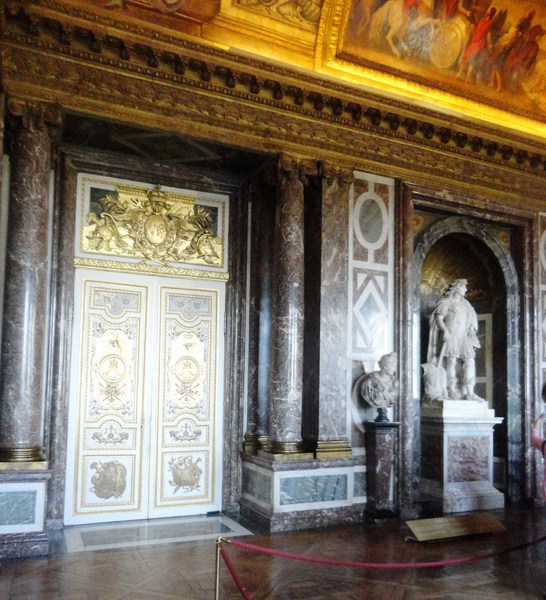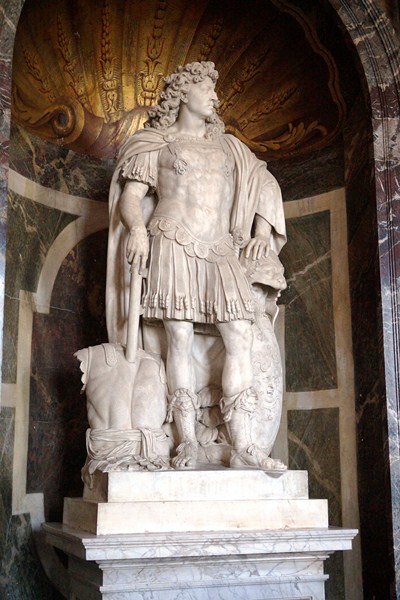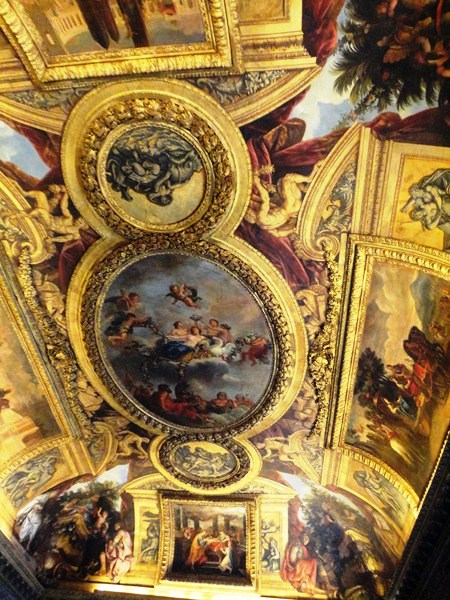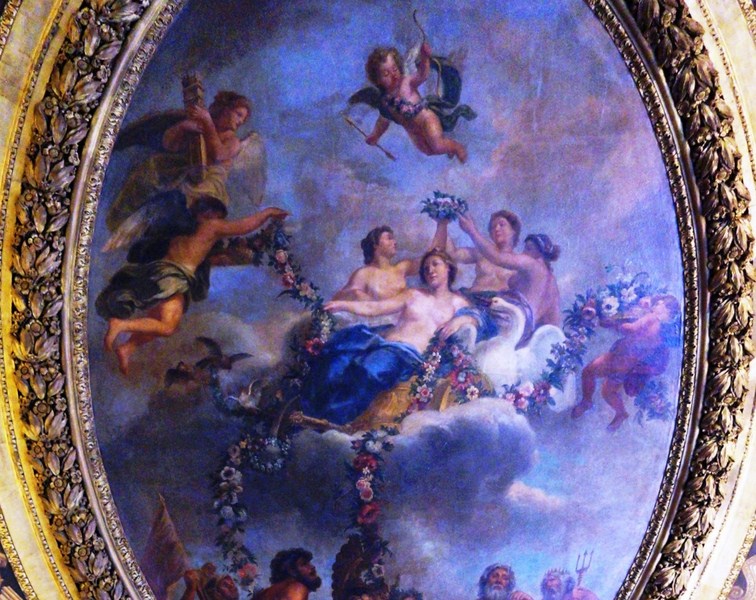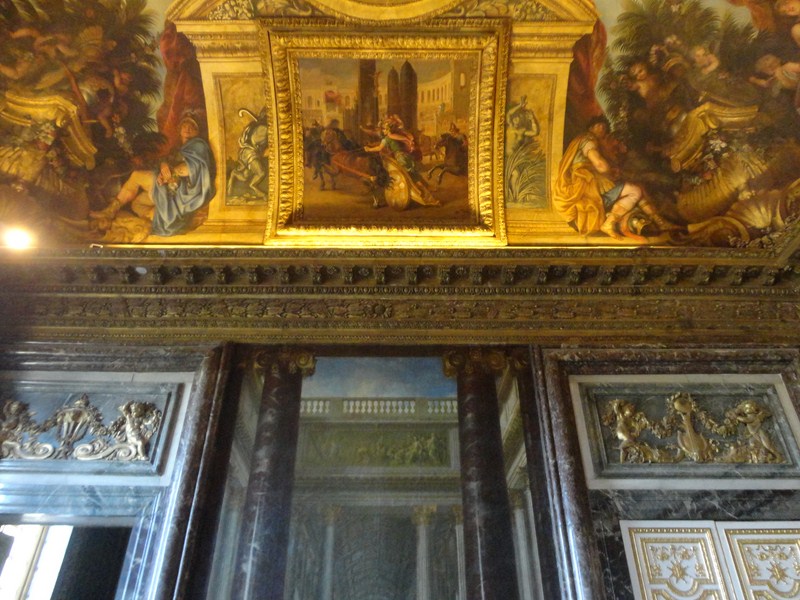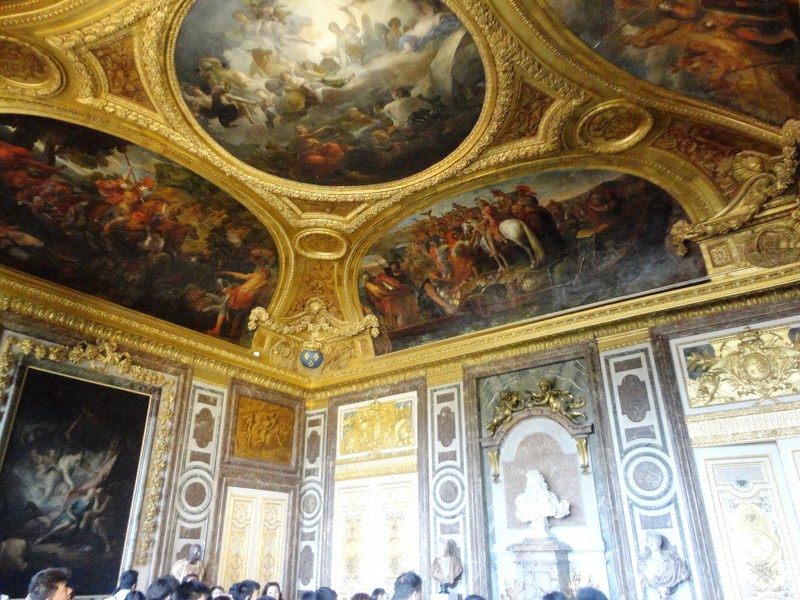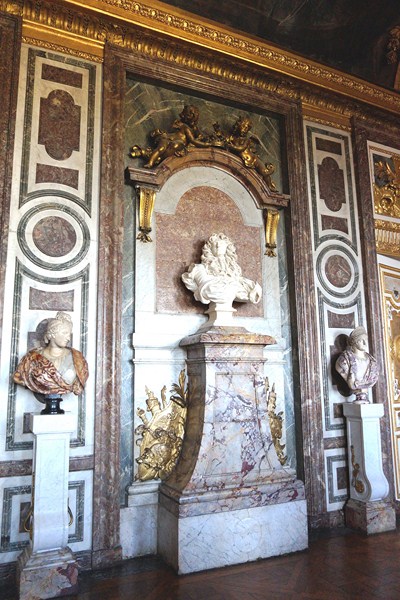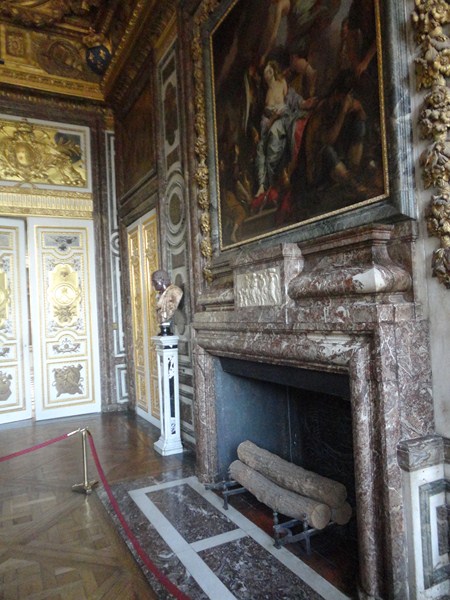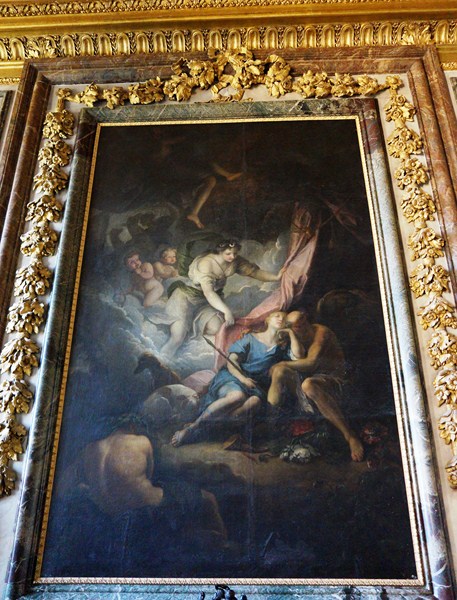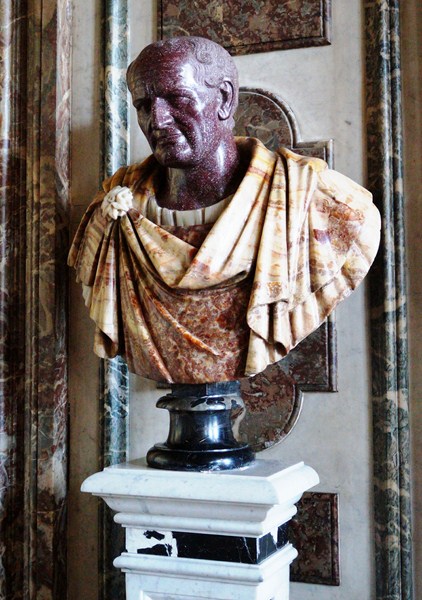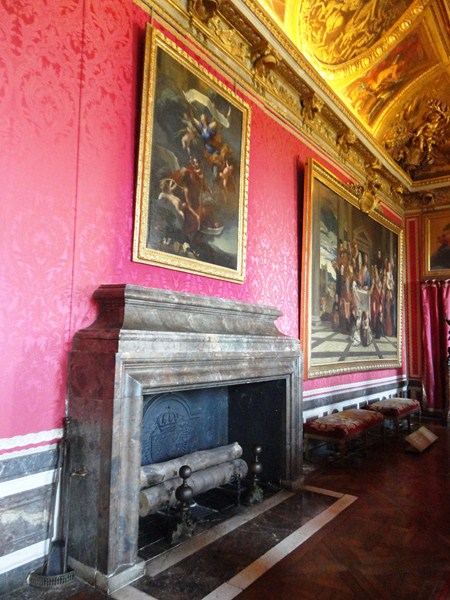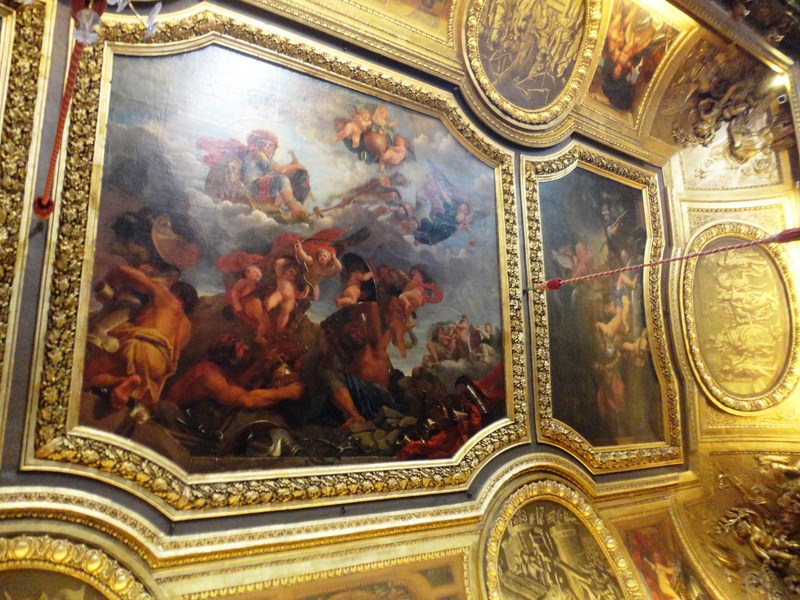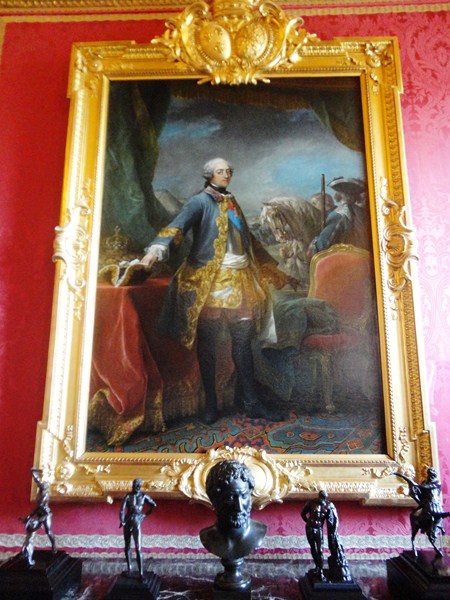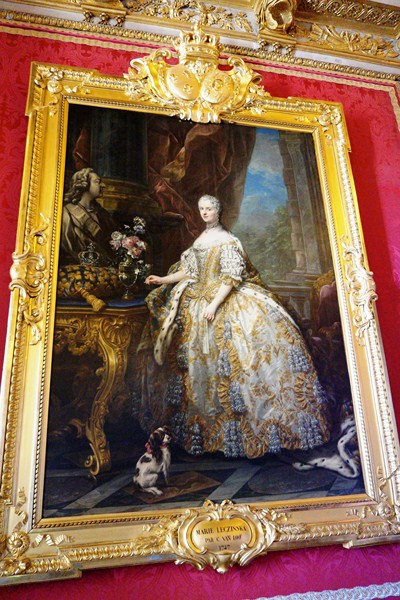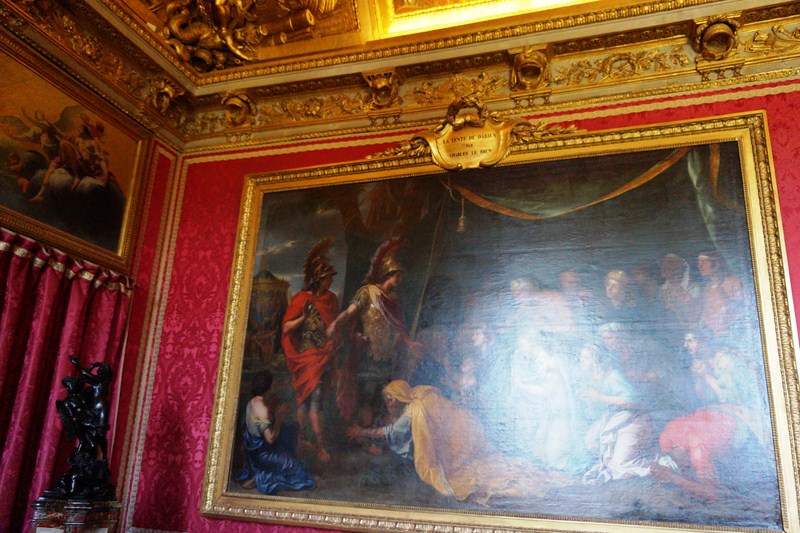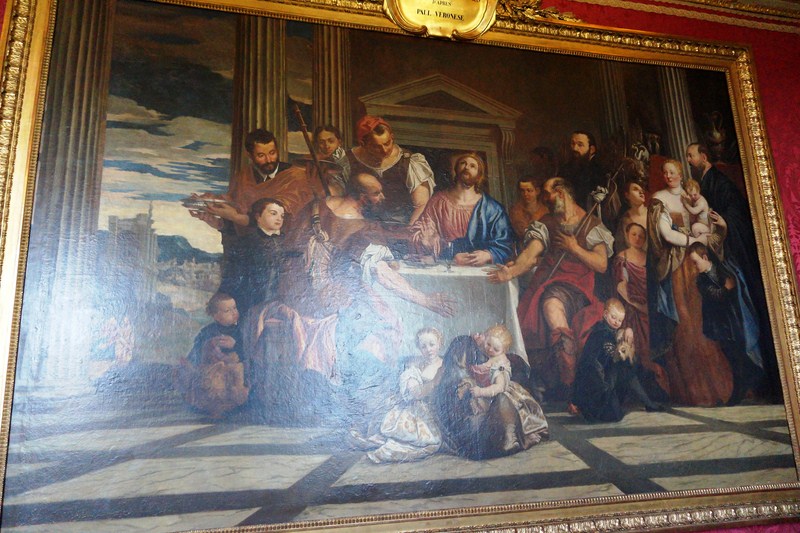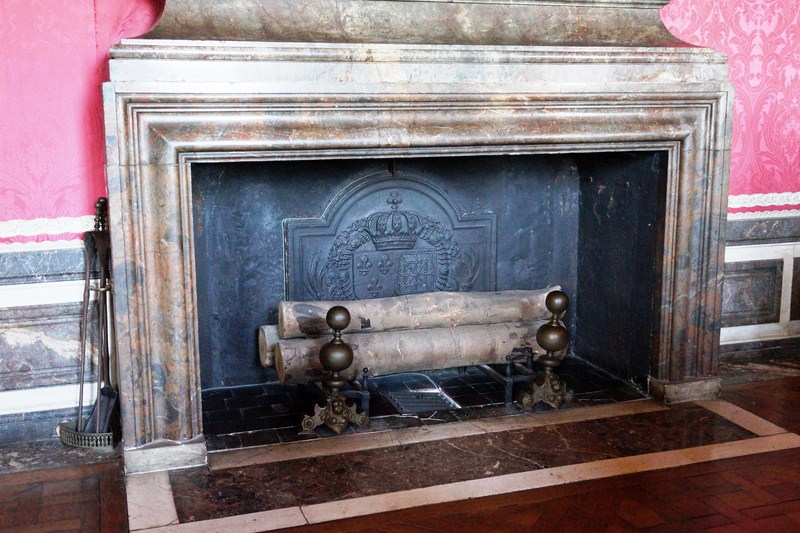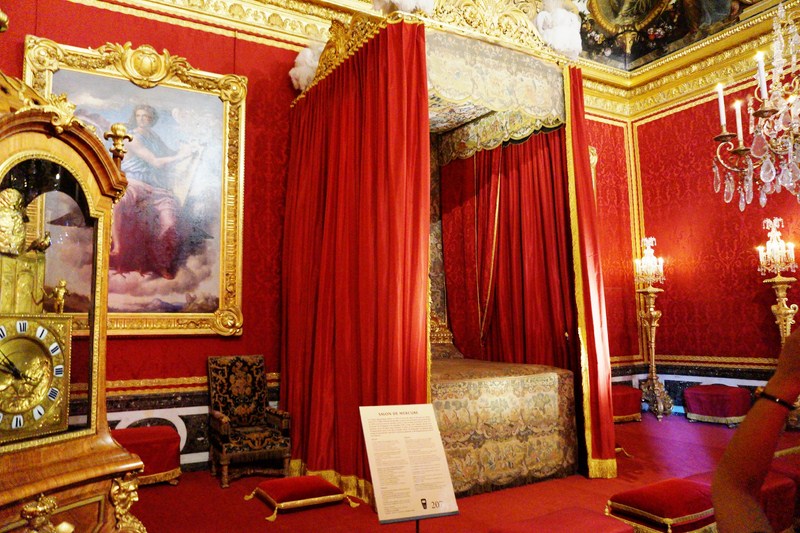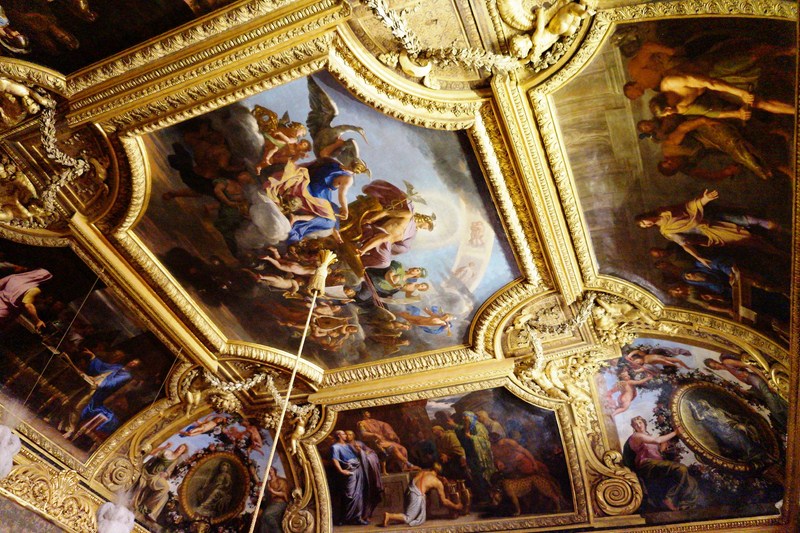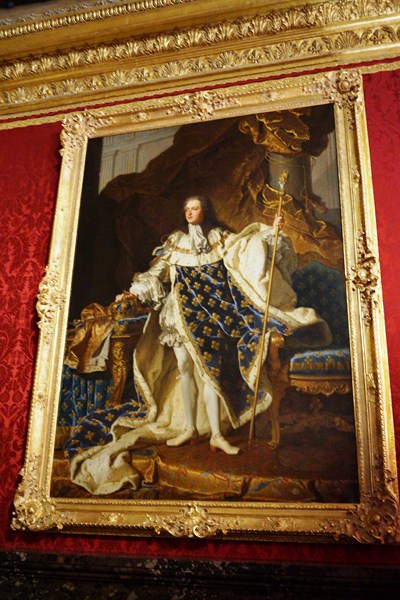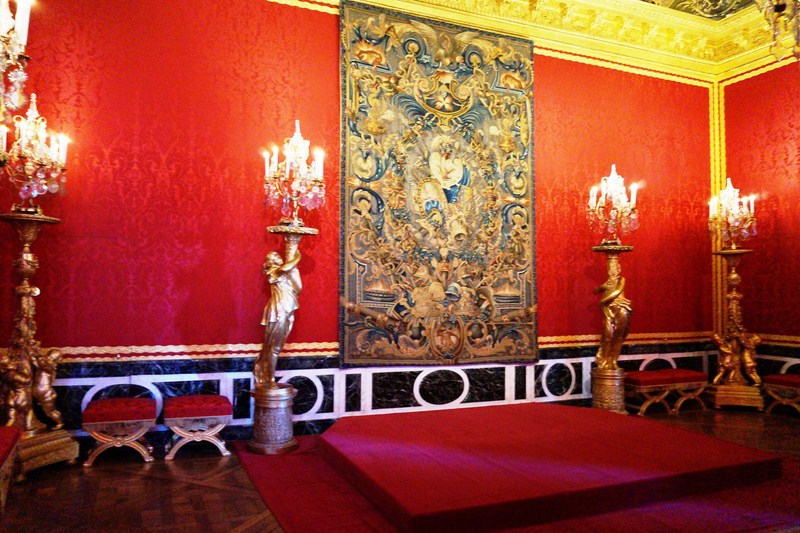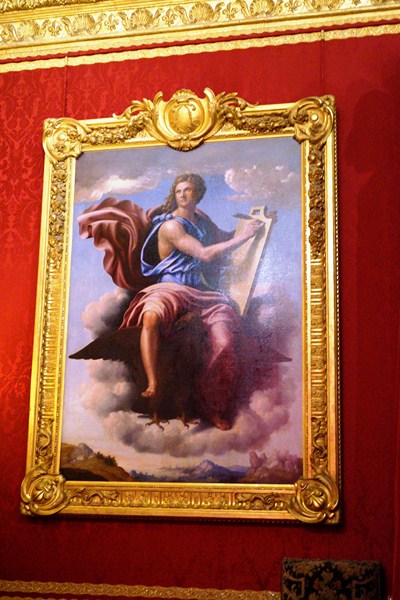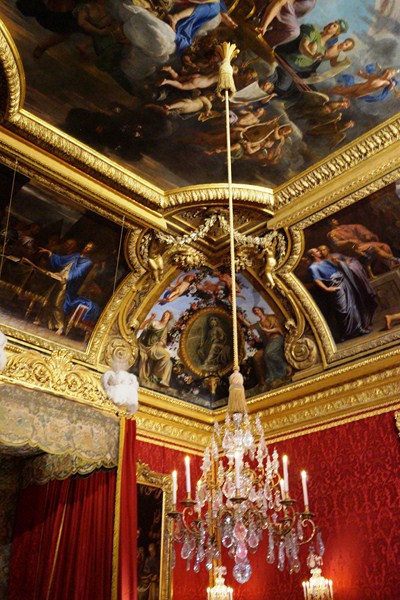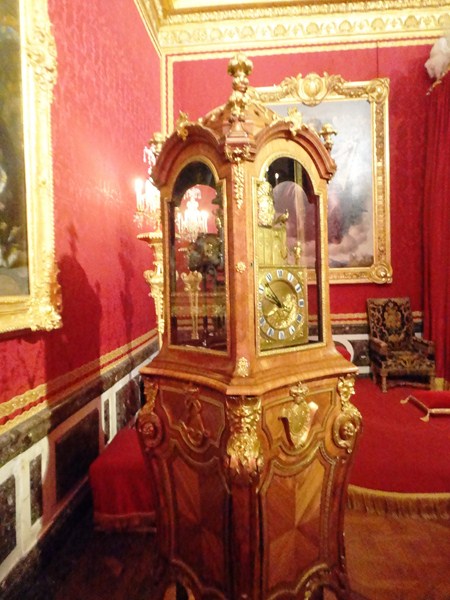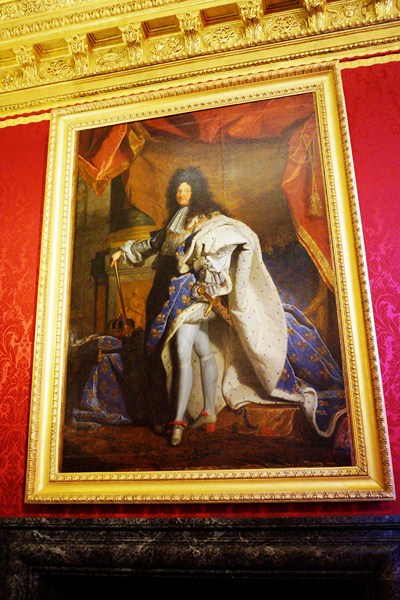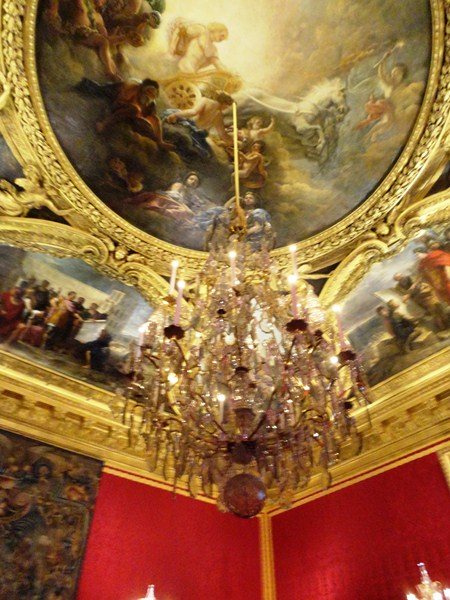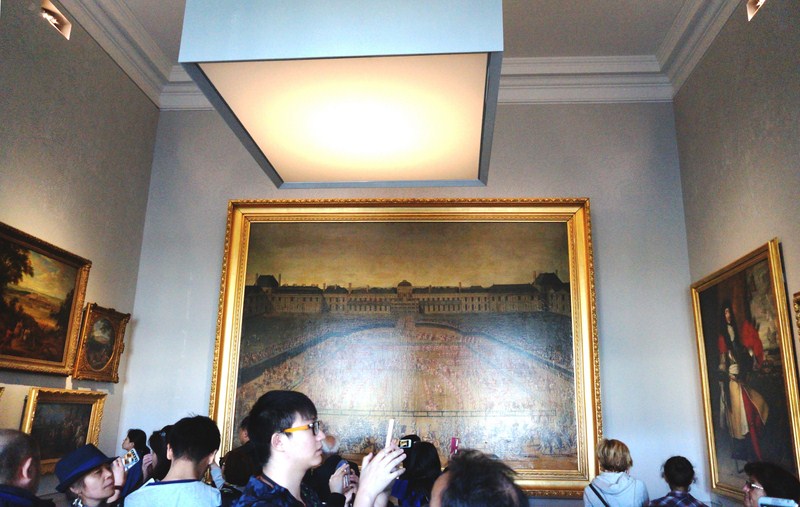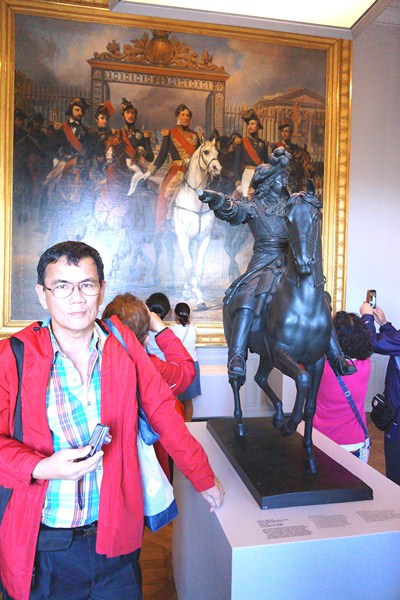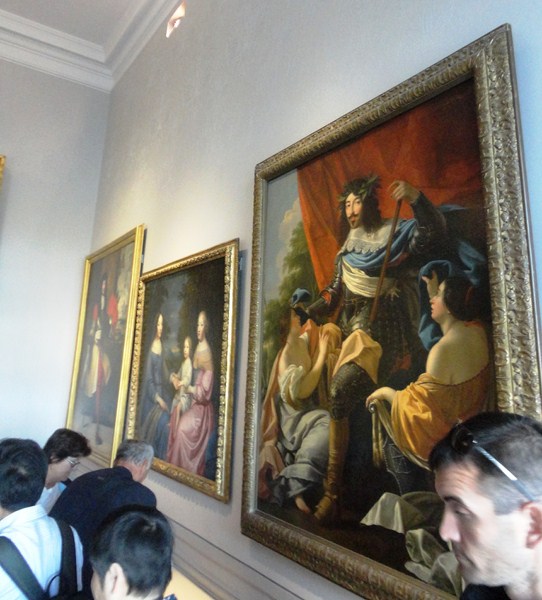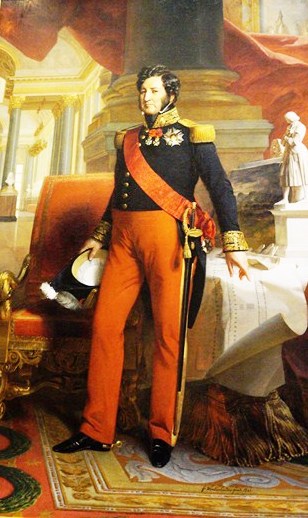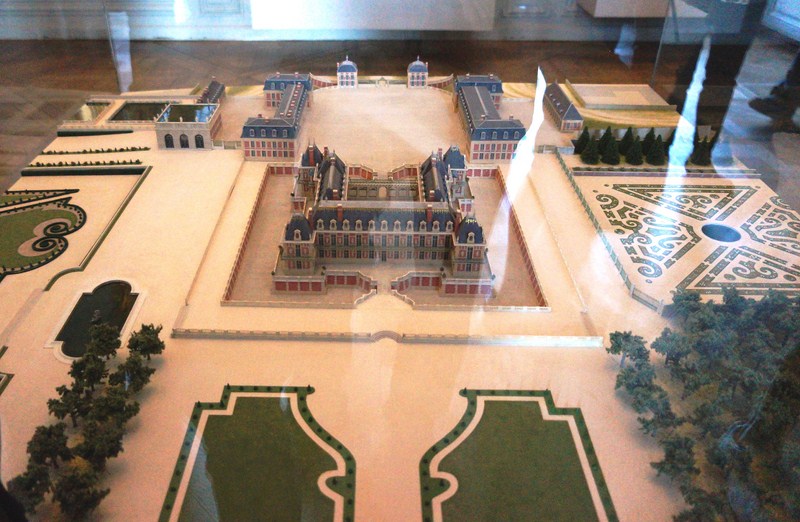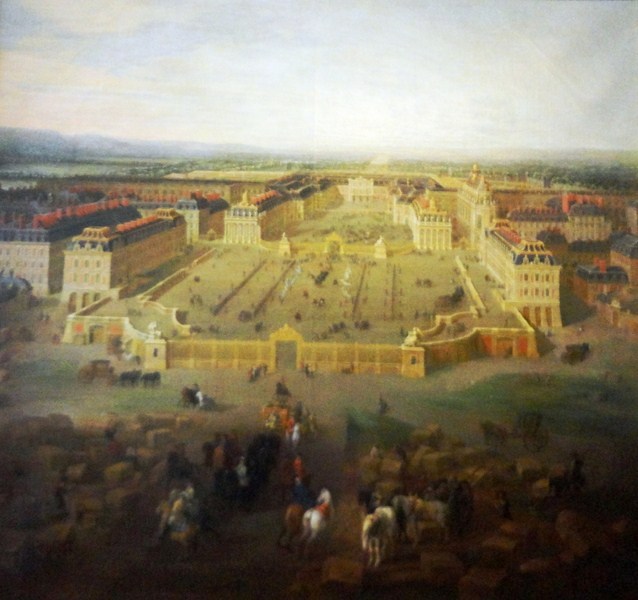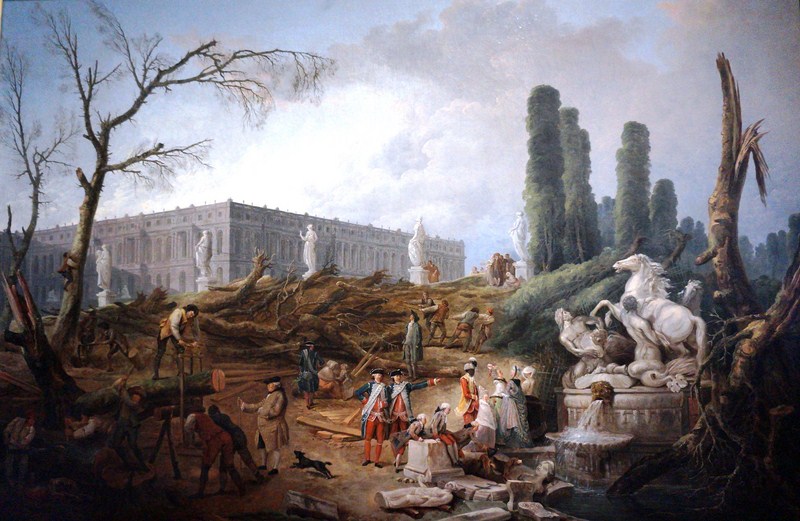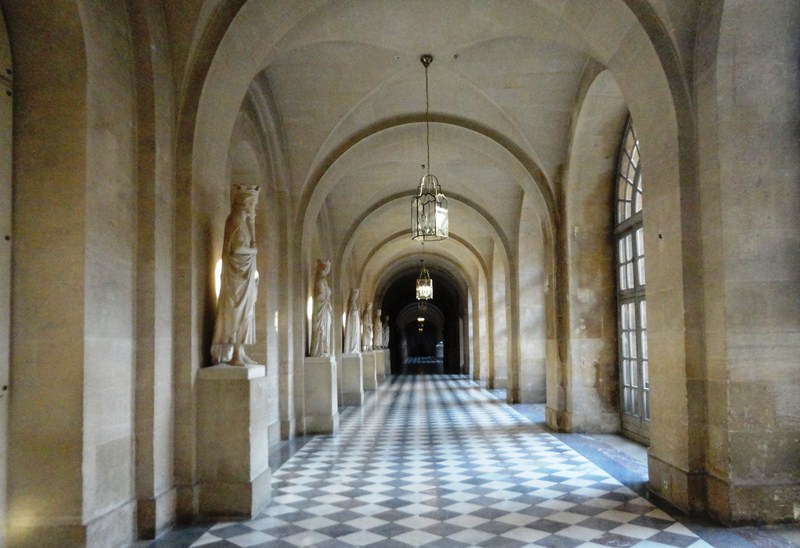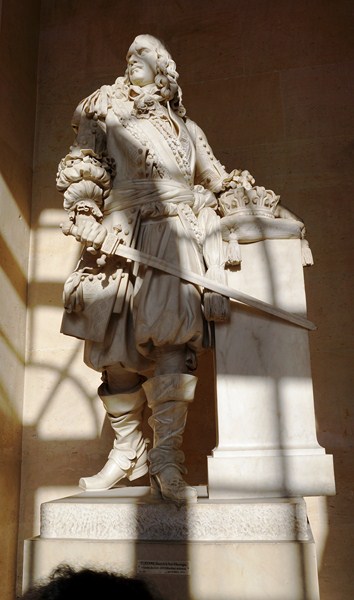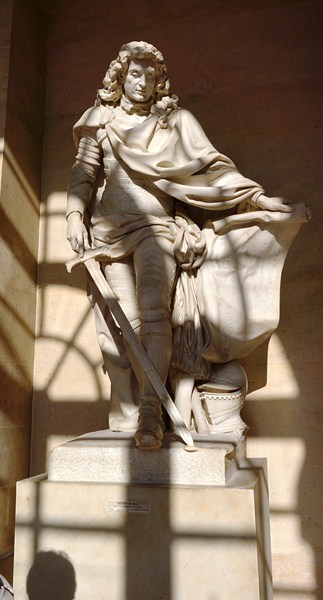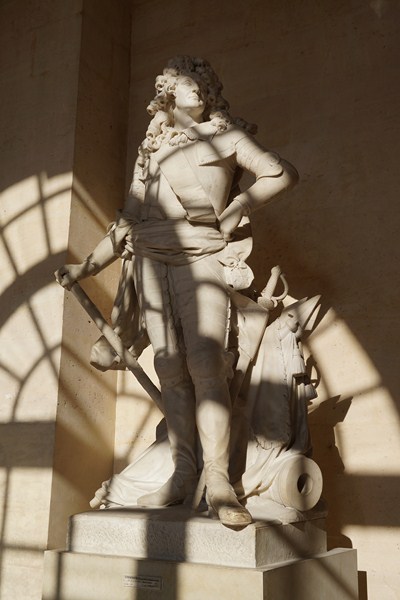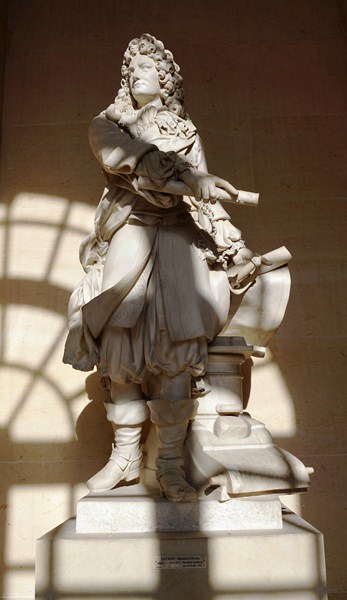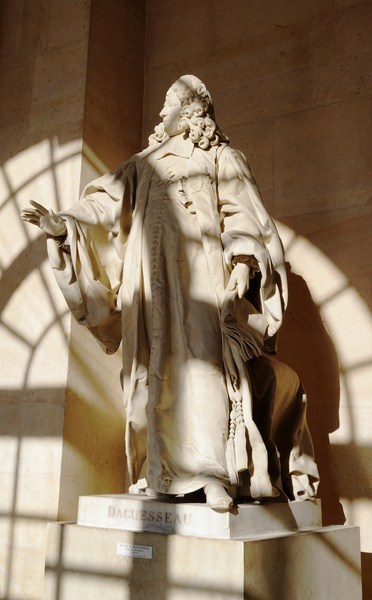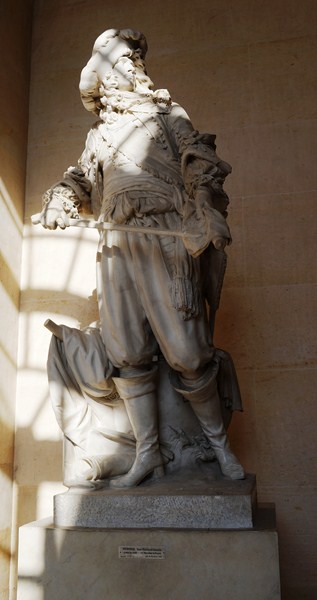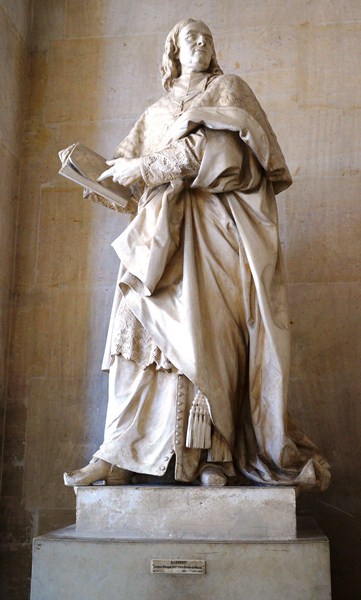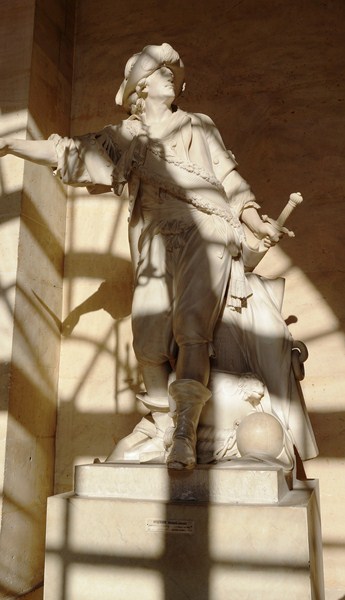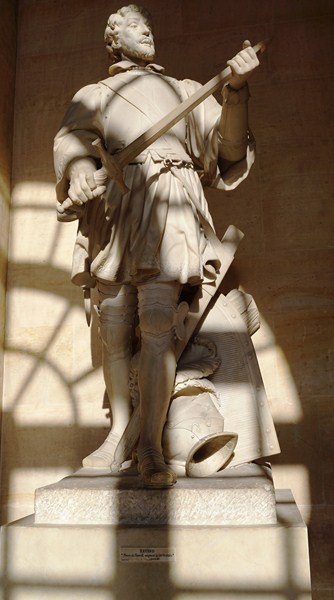The Queen’s Grand Apartment (grand appartement de la reine), a suite of rooms, of exceptional splendor, in the Palace of Versailles that were reserved for the personal use of the queen, overlooks the Parterre du Midi and formed a parallel enfilade with that of the Grand Apartment of the King (grand appartement du roi,).
Check out “Versailles Palace“
The queen’s apartments served as the residence of three queens of France, originally arranged for the use of Marie-Thérèse d’Autriche (wife of Louis XIV, she died not long after moving in, in 1683), by Marie Leczinska (wife of Louis XV) and, finally, for the Austrian archduchess Marie-Antoinette (wife of Louis XVI). Additionally, Princess Marie-Adélaïde of Savoy (Duchesse de Bourgogne), Louis XIV’s granddaughter-in-law and wife of the Petit Dauphin, occupied these rooms from 1697 (the year of her marriage) to her death in 1712.
When Louis Le Vau‘s envelope of the old palace (château vieux) was completed, the Queen’s Grand Apartment came to include a suite of seven enfilade rooms on the first floor in the left wing with a perfectly symmetrical layout that mirrored, almost exactly, the Grand Apartment of the King in the right wing.
The Chapel corresponded to the Salon de Diane in the King’s Grand Apartment, the Salle de Gardes to the Salon of Mars (Salon de Mars), the Antichambre to the Salon of Mercury (Salon de Mercure), the Chambre to the Salon of Apollo (Salon d’Apollon), the Grand Cabinet to the Salon of Jupiter (Salon de Jupiter), the Oratory to the Salon of Saturn (Salon de Saturne) and the Petit Cabinet to the Salon of Venus (Salon de Vénus).
Check out “Versailles Palace – State Apartments of the King”
With regards to the ceiling decoration, those in the Grand Apartment of the King depicted the heroic actions of Louis XIV as allegories from events taken from the antique past while the decoration of the Queen’s Grand Apartment depicted heroines from the antique past and harmonized with the general theme of a particular room’s decor.
The construction of the Hall of Mirrors, which began in 1678, changed the configuration of the Queen’s Grand Apartment. The chapel was transformed into the Queen’s Guards Room (salle des gardes de la reine) and the decorations from the salon de Jupiter were reused here. The Queen’s Guards Room communicates with a loggia that issues from the Queen’s Staircase (escalier de la reine), which corresponded (albeit a smaller, though similarly-decorated example) to the Ambassador’s Staircase (escalier des ambassadeurs ) in the King’s Grand Apartment.
Check out ““Versailles Palace – Hall of Mirrors”
The loggia also provides access to the King’s Grand Apartment. Toward the end of Louis XIV‘s reign, the Queen’s Staircase became the principal entrance to the palace, with the Ambassador’s Staircase used on rare state occasions. In 1752, after the destruction of the Ambassador’s Staircase, the Queen’s Staircase became the main entrance to the palace.
However, this was soon changed when the king decided to set aside all the rooms around the Marble Courtyard for his new apartments, limiting the queen’s space to her State Apartments (which were modified by Marie Leczinska and later Marie-Antoinette) and to a few smaller rooms for more private use, situated behind the official apartments, overlooking two inner courtyards. The Queen’s Apartments consist of the Queen’s Bedchamber (Chambre de la reine), the Nobles’ Room, the Antechamber to the Grand Couvert (formerly the Salle des gardes) and the Queen’s Guard Room (Salle des gardes de la reine).
In 1729, to commemorate the birth of his only son and heir, Louis, Louis XV ordered a complete redecoration of the room. Elements of the Queen’s Bedchamber (chambre de la reine), as it had been used by Marie-Thérèse d’Autriche and Princess Marie-Adélaïde of Savoy, were removed and a new, more modern decor was installed.
During her life at Queen’s Grand Apartment, Marie Leszczynska (1703–1768) annexed the salon de la paid to serve as a music room. In 1770, when Marie-Antoinette married the dauphin (later Louis XVI), she took up residence in these rooms and, upon Louis XVI‘s ascension to the throne in 1774, ordered major redecoration of the Queen’s Grand Apartment which achieved the arrangement that we see today.
The Bedchamber, the most important room in the apartments, is where the Queen spent most of her time, where she slept (often with the king) and, in the morning, where she received guests during and after her toilette (like the King’s getting-up ceremony, it was a courtly affair controlled by strict etiquette).
It was also here that the queen gave birth, in public (actually misleading since, in reality, only doctors, ladies in waiting, the governess of the Princes and Princesses of the Realm, the Princesses of the royal family and a few members of the church were allowed to enter) to the Princes and Princesses of the Realm. The queen was placed on a labor bed specially brought in, and was hidden behind a screen or canvas tent.
After giving birth, she was returned to her own bed while the whole court (waiting in the other rooms in the Apartment whose doors were all symbolically left open) filed through to present their compliments. Between 1682 and 1786, 19 Princes and Princesses of the Realm were born here and two queens died here (Maria-Theresa in 1683 and Marie Leszczyńska in 1768).
The decoration in the room, still reflecting the three queens who once occupied it, features partitions on the ceiling dating back to the reign of queen Marie-Thérèse d’Autriche, a greyscale painting by François Boucher and wood panelling added for Marie Leszczyńska, all elements that survived the reign of Marie-Antoinette who replaced the furniture and fireplace and put up paintings of her mother Empress Maria-Theresa and her brother, Emperor Joseph II.
The jewelry cabinet, commissioned to Schwerdfeger by Marie-Antoinette, is placed in its original position in the alcove to the left of the bed. The 1745 Baillou and Crescent clock Marie-Antoinette placed in the bedchamber has been restored to its place. Other items returned to the room include Sené’s chimney piece, andirons by Boizot and Thomire and the bedspread by Desfarges.
Other pieces of furniture which were sold at an auction that lasted a year, such as the sofa delivered for the Countess of Provence (the queen’s sister-in-law), have been replaced by similar items. The armchairs by Tilliard and folding stools were taken from the suite of rooms belonging to the Countess d’Artois. The fabrics, hanging on the bed and walls, were re-woven in Lyon using the original patterns; the bed and balustrade have been remade and the Savonnerie carpet rewoven using ancient documents.
The Grand Cabinet, now the Nobles’ Room (salon des nobles), was used as a second antechamber where Queen Marie Leszczyńska (and, later, Marie-Antoinette) held formal audiences, seated under a canopy, as well as her Circle (the name given to the times spent in orderly conversation by the ladies of the Court). When not used for formal audiences, the Noble’s Room served as an antechamber to the queen’s bedroom.
In 1785, Marie-Antoinette, not too fond of the Louis XIV style of the room, entrusted Richard Mique, her architect, with completely redecorating it (except for the ceiling which was kept). Apple-green damask, bordered with a wide gold stripe, were hung on the walls, and new, extremely modern and refined furniture were delivered.
When making the majestic commodes and corner cupboards for the room, the queen’s favorite cabinetmaker Riesener followed the latest English fashion by abandoning the customary marquetry in favor of large panels of mahogany. In this magnificent collection, the gilded bronze decoration and the small tables in Bleu Turquin marble matched the decoration on the new fireplace.
The ceiling paintings, by Michel Corneille, depicts Mercury Spreading his Influence over the Arts.
A tapestry portrait of Louis XV by Cozette hangs on the wall, with mythological paintings by Francois Boucher. The mantlepiece ornaments show a Turkish influence while the commodes and corner cupboards, by Riesner and Gouthière, are dated 1786. The overdoors depict Pygmalion and Dibutade by Regnault while the bronze fireplace ornaments are by Gouthière.
Traditionally, public meals at the Royal Table or Grand Couvert (a lavish court ceremony attracting a large number of curious, decently dressed onlookers), taken by the king and members of the royal family, were held at the Royal Table Antechamber, now the Antechamber of the Grand Couvert (Antichambre du Grand Couvert). Privileged duchesses, princesses or those holding important positions sat in front them on stools while the other ladies and people whose rank granted them entry or who were admitted by the ushers stood around them. In the 1680s, the room was sometimes used as a theatre for the château.
Almost every evening, Louis XIV strictly adhered to this ceremonial performance (seated alone at a table in front of the fireplace, his spoon, fork, and knife were brought to him in a golden box and courtiers could watch as he dined) whereas Louis XV, more often, preferred private dinners. Louis XVI and Marie-Antoinette only ate at the Royal Table once a week, sitting with their backs to the fireplace. Louis XVI ate well but Marie Antoinette, who was bored, requested that music be played during meals, installing a platform for musicians to this end.
Designed for Queen Marie-Thérèse d’Autriche, the room’s lower panels were made of marble and two famous paintings of Marie Antoinette hang on the walls, including that which includes all her children. Portraits of Louis XVI’s aunts by Madame Labille-Guiard are part of the decor. Above the doors are works by Madeline de Boulogne dated 1675.
The original, very large painting of ancient heroines on the ceiling, illustrating royal virtues, by the artist Claude-François Vignon and Paillet, quickly deteriorated and, in 1814-1815, was replaced with a Veronese canvas Saint Mark Rewarding the Theological Virtues. Later, in 1861, it was substituted by the current, equally large marouflé canvas, Darius’ Family at Alexander’s Feet, a tapestry cartoon painted by Henri Testelin after a work by Le Brun. The gilt stuccos were sculpted by Pierre I Le Gros the Younger and Benoît Massou.
In 2007, due to the bulging of the camaieus on the arches, emergency measures were taken. Between April 2009 and July 2010, the Antechamber of the Grand Couvert was restored, thanks to sponsorship from Martell & Co. Thanks to a 1788 inventory of the furniture in this room (the pieces were well documented but are now lost), the furniture is now as they would have been when the royal family was forced to leave the palace, with Louis XV period seats and stools with Savonnerie manufactory upholstery and a large table placed in the center of the room as it would be when the King and Queen sat down for the Grand Couvert. In order to evoke the royal dinnerware which is close to that used by French royalty but which disappeared during the Revolution, the Louvre lent silverware produced for George III of England by Robert-Joseph Auguste.
Facing the large windows is the tapestry Autumn or The Triumph of Bacchus and Ariadne, was put on deposit here by the Mobilier National from the ensemble in the gallery of the Château de Saint Cloud after cartoons by Pierre Mignard. A deep crimson damask fabric, woven according to the description afforded by a document from the first half of the 18th century, was placed on the walls.
The Queen’s Guard Room, where 12 of the Queen’s Guards (composed of soldiers from the four elite companies of the King’s Guards) were on duty day and night, controlled entry to the Queen’s Apartments from the Queen’s Staircase (also called the “Marble Staircase”). In 1672, the room was used as a Chapel and, in 1676-1681, received its final decoration.
Since the Queen never spent time here and there was therefore no need to modernize it, the Queen’s Guard Room is the only room in the Apartments in which the 17th-century decoration has been fully preserved, still contains the marble paneling, enhanced with gilded bronze designed by Le Brun and executed by Le Gros and Massou, characteristic of the State Apartments’ original condition, as well as the paintings, by Noël Coypel, which were brought here in 1680 from the old Jupiter Drawing Room (later replaced by the War Room).
At dawn on October 6, 1789, a group of rioters demanding bread tried to enter the Queen’s Apartments. Warned by one of the queen’s guards, one of the ladies in waiting managed to bolt the door to the Antechamber of the Grand Couvert and help the queen hurry, through a private corridor, to the king’s apartments, via her private chambers, and flee from the Paris mob.
NOTE:
On January 2016, the Queen’s Apartment was closed for major works and, on April 16, was again open to the public. The revived magnificence of the Rococo style of Marie-Antoinette’s bedchamber or that of the Queen’s Guard Room was restored, thanks to the patronage of American Friends of Versailles and the Société des Amis de Versailles. Today, the tour route passes through the rooms in the opposite direction to the traditional order during our visit, now starting in the bedchamber and ending in the Queen’s Guard Room, which originally marked the entrance to the Queen’s Apartments during the Ancien Régime.
Queen’s Grand Apartment: First Floor, Chateau De Versailles, Place d’Armes, 78000 Versailles, France. Tel: +33 1 30 83 78 00. Website: www.chateauversailles.fr. Open daily (except on Mondays and May 1), from 9:00 AM to 6:30 PM. Last admission is 6 PM while the ticket office closes at 5.45 PM. The estate of Trianon and the Coach Gallery only open in the afternoon while the Park (7 AM to 8:30 PM) and Gardens (8 AM to 8.30 PM, last admission: 7 PM) are open every day. Access to the Gardens is free except on days of fountains shows. You can access the estate of Trianon through the Gardens or through the city. The Petit Trianon is only possible via the Grand Trianon.
Admission: 27 € for Passport with Timed Entry (days with Musical Fountains Shows or Musical Gardens), 20 € for Passport with Timed Entry (without musical fountains show or musical gardens), 12 € for Estate of Trianon ticket(without Musical Fountains Show or Musical Gardens), 10 € for Passport with Timed Entry (free admission, days with Musical Fountains Show or Musical Gardens), 9,50 € for Musical Fountains Show ticket, 8,50 € for Musical Gardens ticket, 28 € for the Fountains Night Show.
How to Get There: The cheapest option for reaching Versailles is by train. There are three train stations in Versailles. RER line C arrives at Versailles Château – Rive Gauche train station, the closest one of the Palace (just 10 minutes’ walk to the Palace). SNCF trains from Gare Montparnasse arrive at Versailles Chantiers train station, which is 18 minutes on foot to the Palace. SNCF trains from Gare Saint Lazare arrive at Versailles Rive Droite train station, 17 minutes on foot to the Palace. RER C and SNCF train times are available on www.transilien.com


